Best road bikes 2025: reviewed and rated by road cycling experts and racers
Our expert testers have chosen 12 of the best road bikes, from budget models to grand tour-proven race machines
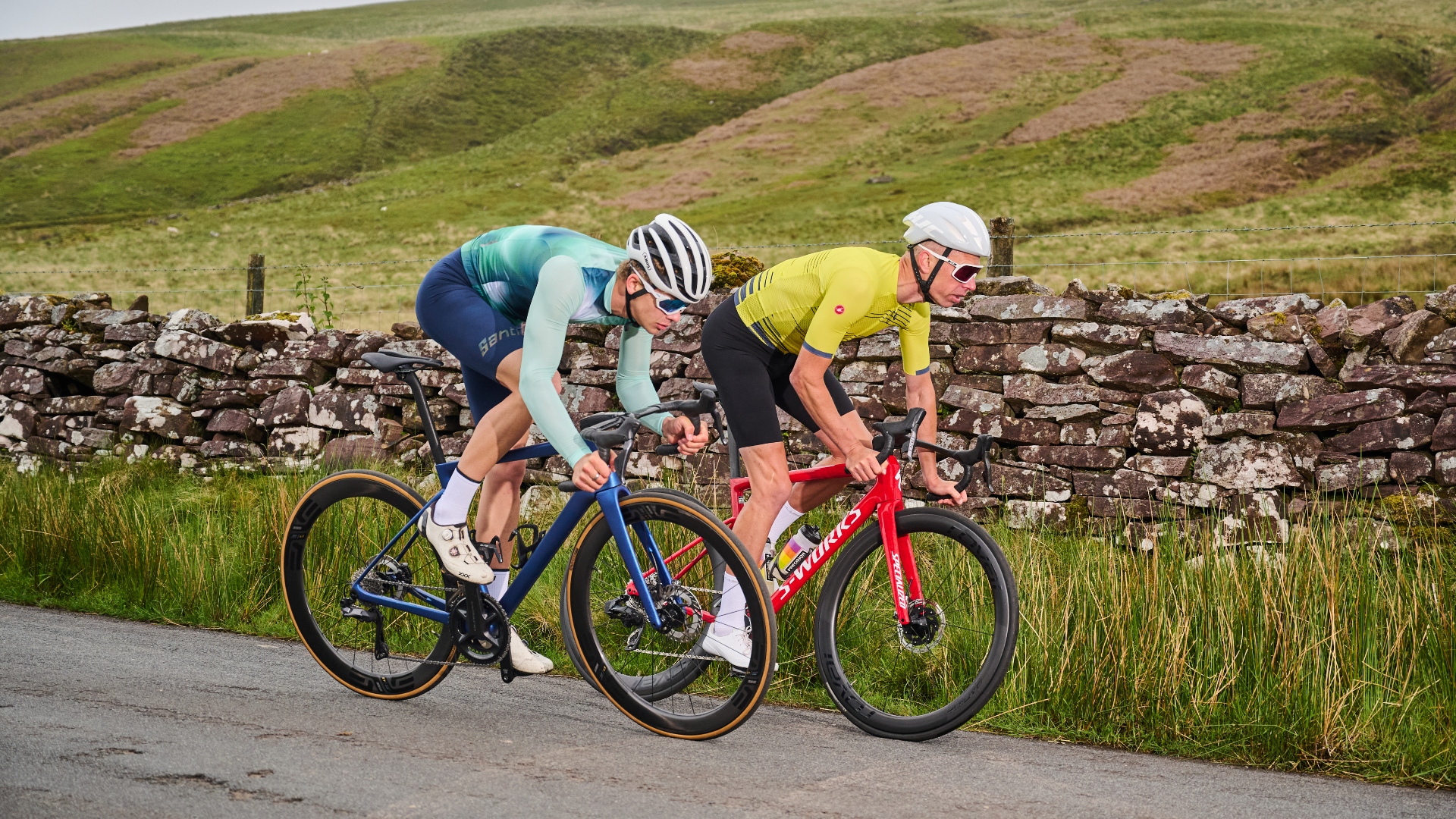
As we head into the off-season, and we hang up our 'nice' bikes in favour of some indoor training or, for those brave souls, a winter bike; These dark and cold months ahead are, however, an ideal time to be investigating which one of the best road bikes you might like to ride next season. The road category is, however, expansive, making it somewhat tricky to narrow down your choices. Fear not, help is at hand.
The Cycling Weekly team have ridden and reviewed hundreds of the best road bikes, including WorldTour machines, those designed for road cycling newcomers, and many in between. This has allowed us to gain valuable insights into which bikes deliver the best ride quality and value for money, alongside those that excel in specific areas, such as climbing or endurance cycling. From our testing, we’ve selected 12 of our favourites in several categories to help you find the best road bike for you. They aren't all top-of-the-range super bikes either; in fact, some of the team's favourite bikes are some of the best budget road bikes.
However, our best overall pick does go to one of those superbikes, the Specialised Tarmac SL8, while it was named our Race Bike of the Year, the Tarmac is much more than a race bike, offering the best handling on the market and can be purchased in a wide range of specifications depending on your budget.
For those who enjoy covering some miles but would like something a little more capable and that allows for excursions off the blacktop, check out our guide to the best gravel bikes.
Quick list
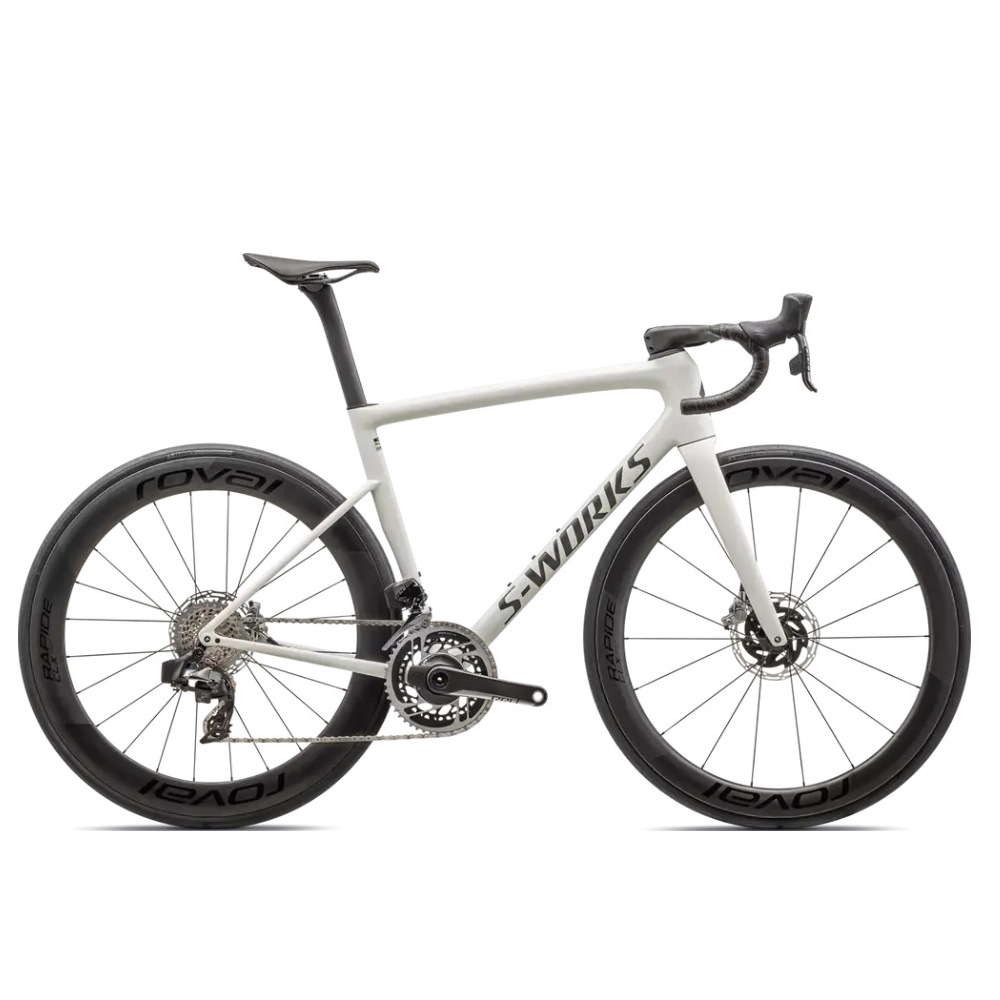
The S-Works Tarmac SL8 is the complete race bike, blending aerodynamics, stiffness and comfort in a super light weight package that excels across differing terrain.
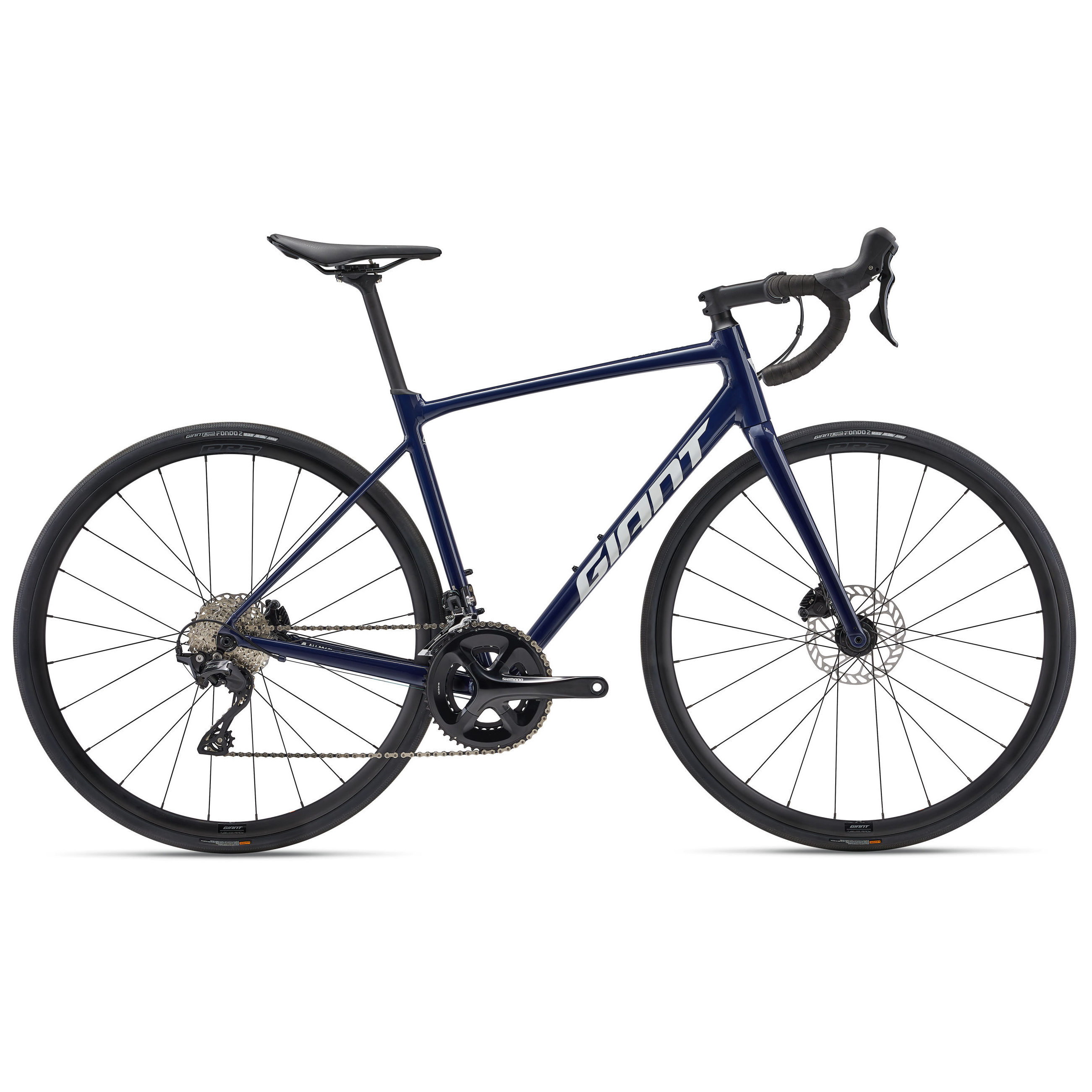
At a price point dominated by carbon and Direct-to-consumer brands, the Giant Contend SL 1 highlights the value of a well-made and designed alloy road bike.
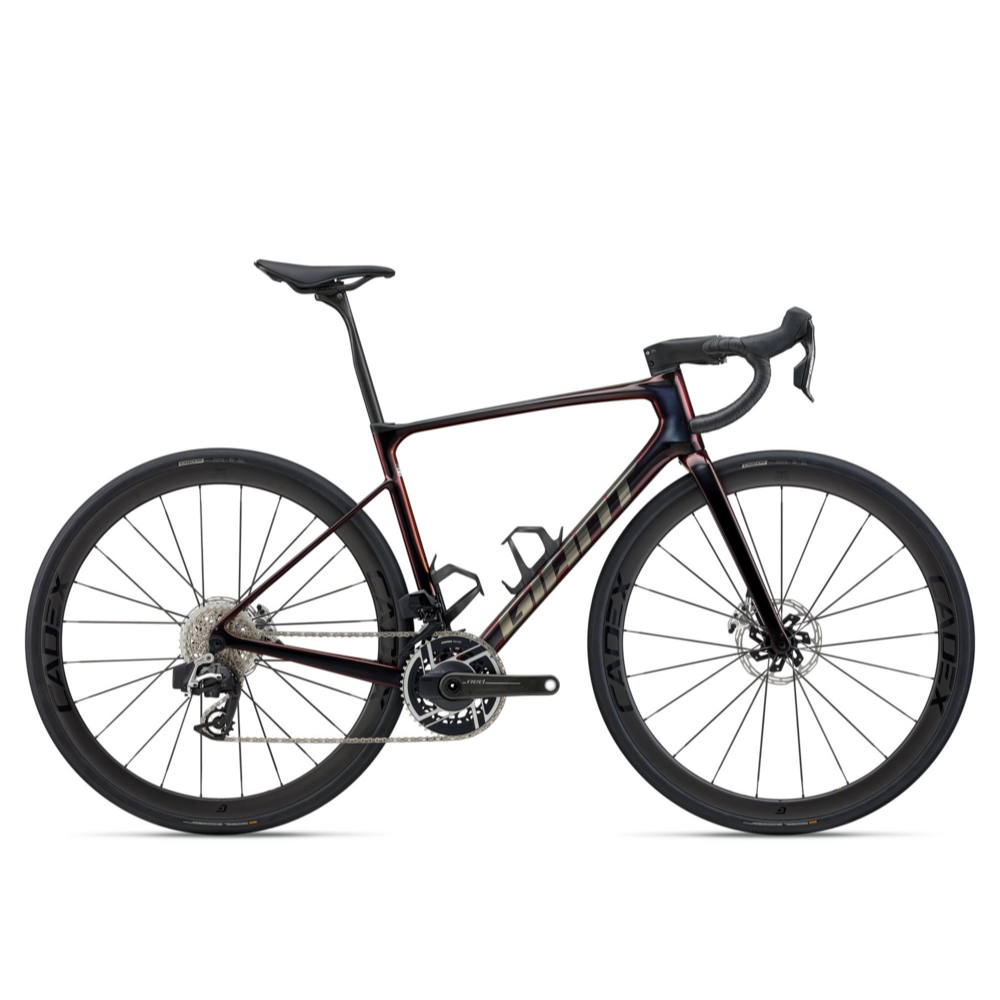
The latest Defy Advanced is lighter and faster than previous models but vitally retains the comfort, sensible geometry and good looks that have made it an endurance bike icon.
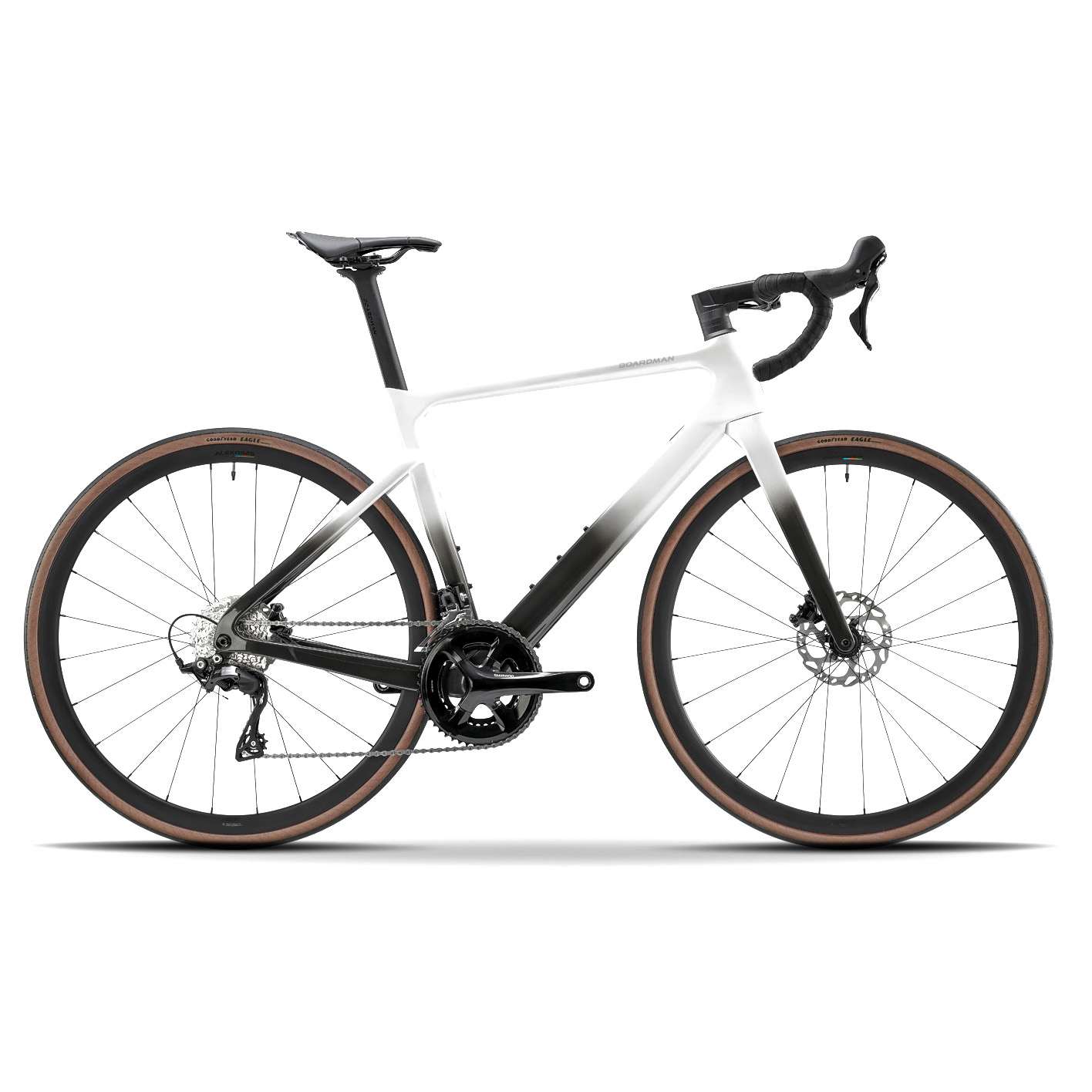
Despite its racy looks, the SLR 9.0's ride quality is spot on, and you will be pleased to find a wealth of practical features. The Boardman attempts to do a lot of things, and it does all of them very well.
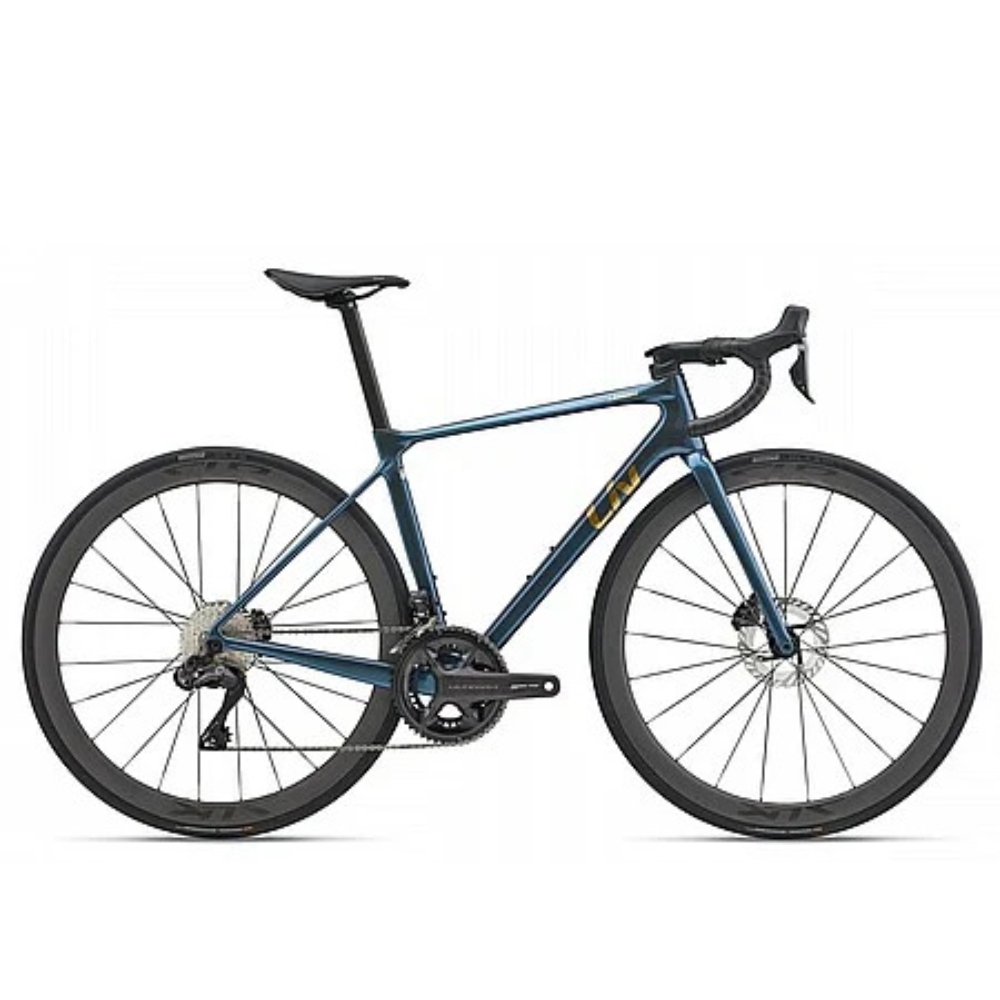
Given its race pedigree, the Langma offers little in the way of compromises. It is a bike that shines regardless of what you throw at it. Thanks to its updated aero profiling, it is now super fast.
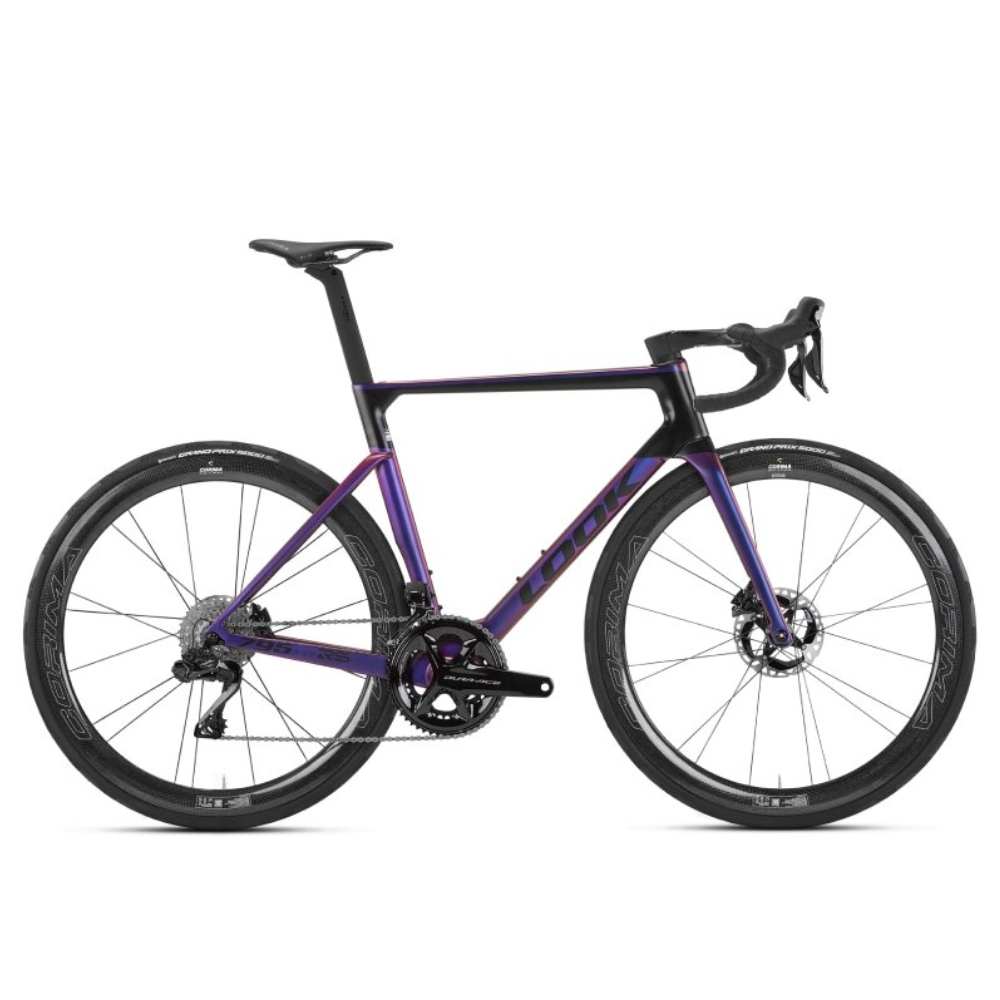
The 795 Blade RS is fast of course, but it's also supremely responsive and surprisingly comfortable, making it not just a great bike for flat roads but for rolling terrain as well.
Load 6 more the best road bikes

There are lighter, faster and snappier bikes than the V5Rs from Colnago. However, the more I rode it, the more enjoyable it became. Its understated nature and competence will draw you in.
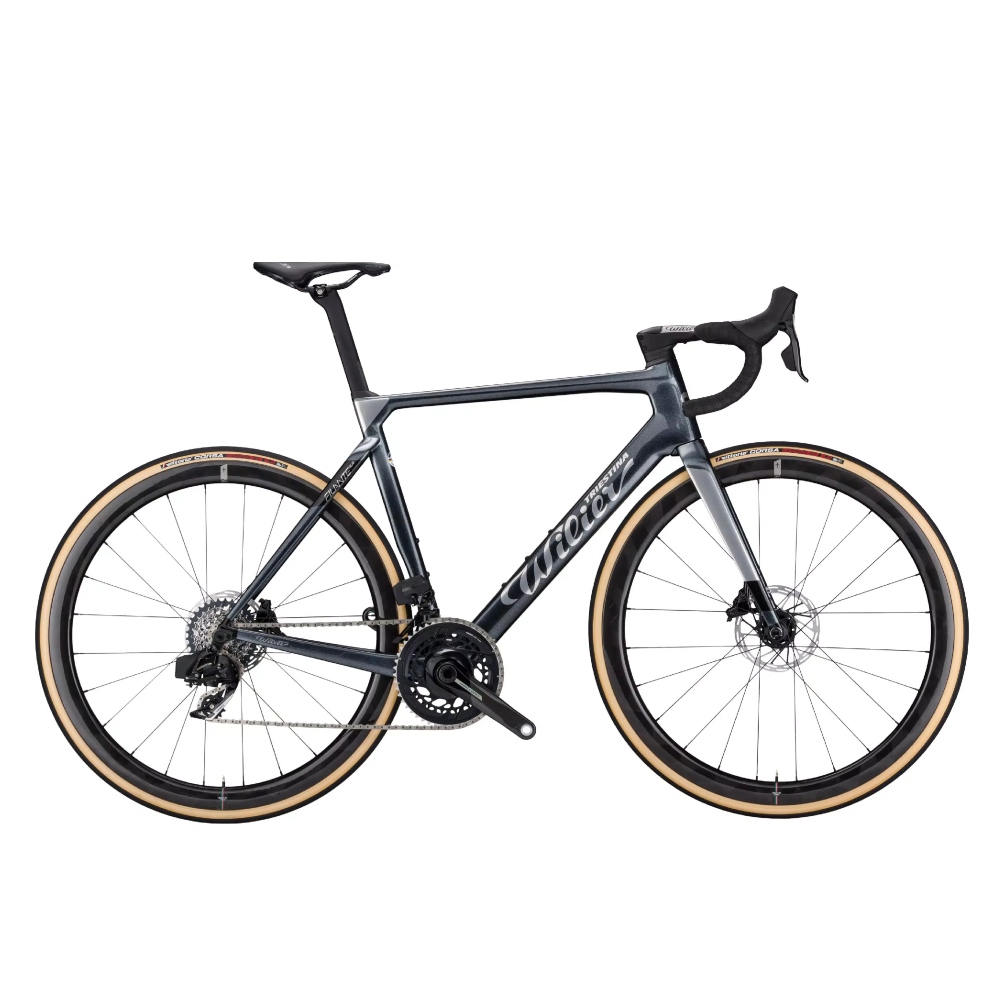
While the Filante isn't a women-specific model, it's offered in small sizes with vast fit options. As for its attributes, it's light, agile and comfortable, making it a superb all-rounder.
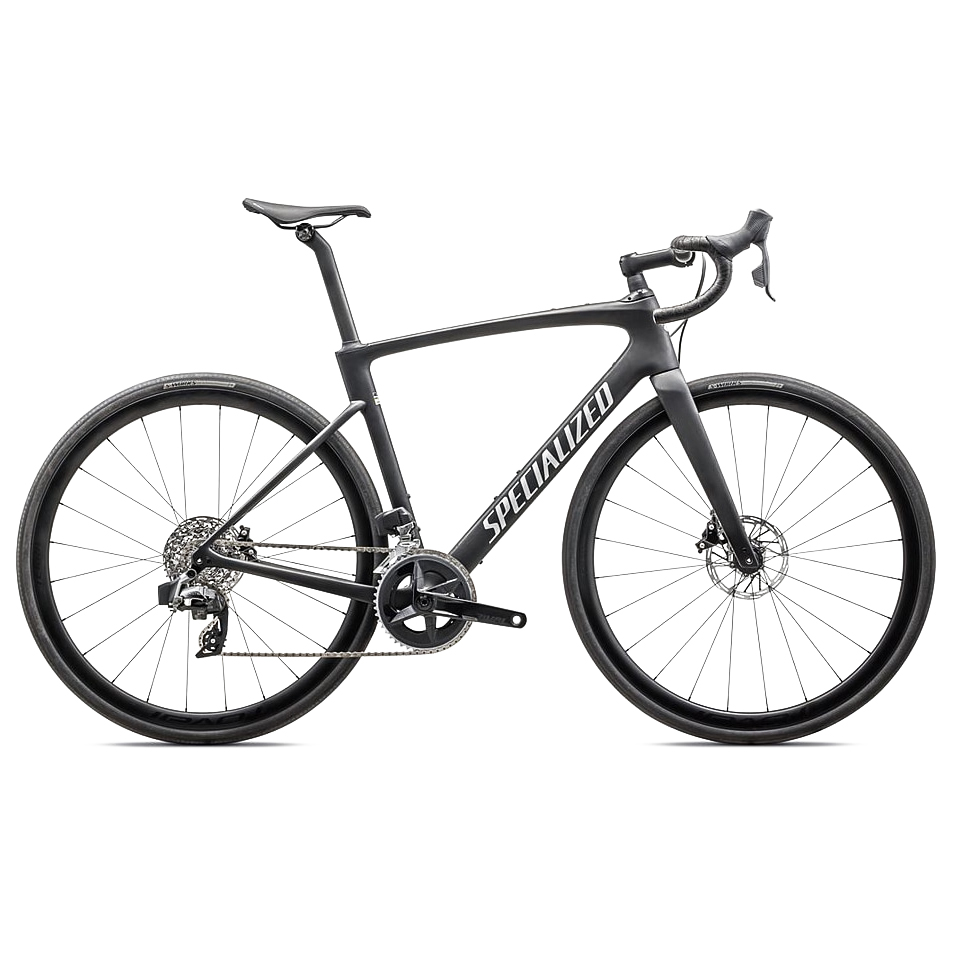
40mm tyre clearance and suspension stem. You could be forgiven for thinking this is the review of a Gravel bike. There is a compelling argument to say that comfort is faster, and the Roubaix SL8 certainly packs a lot of that.
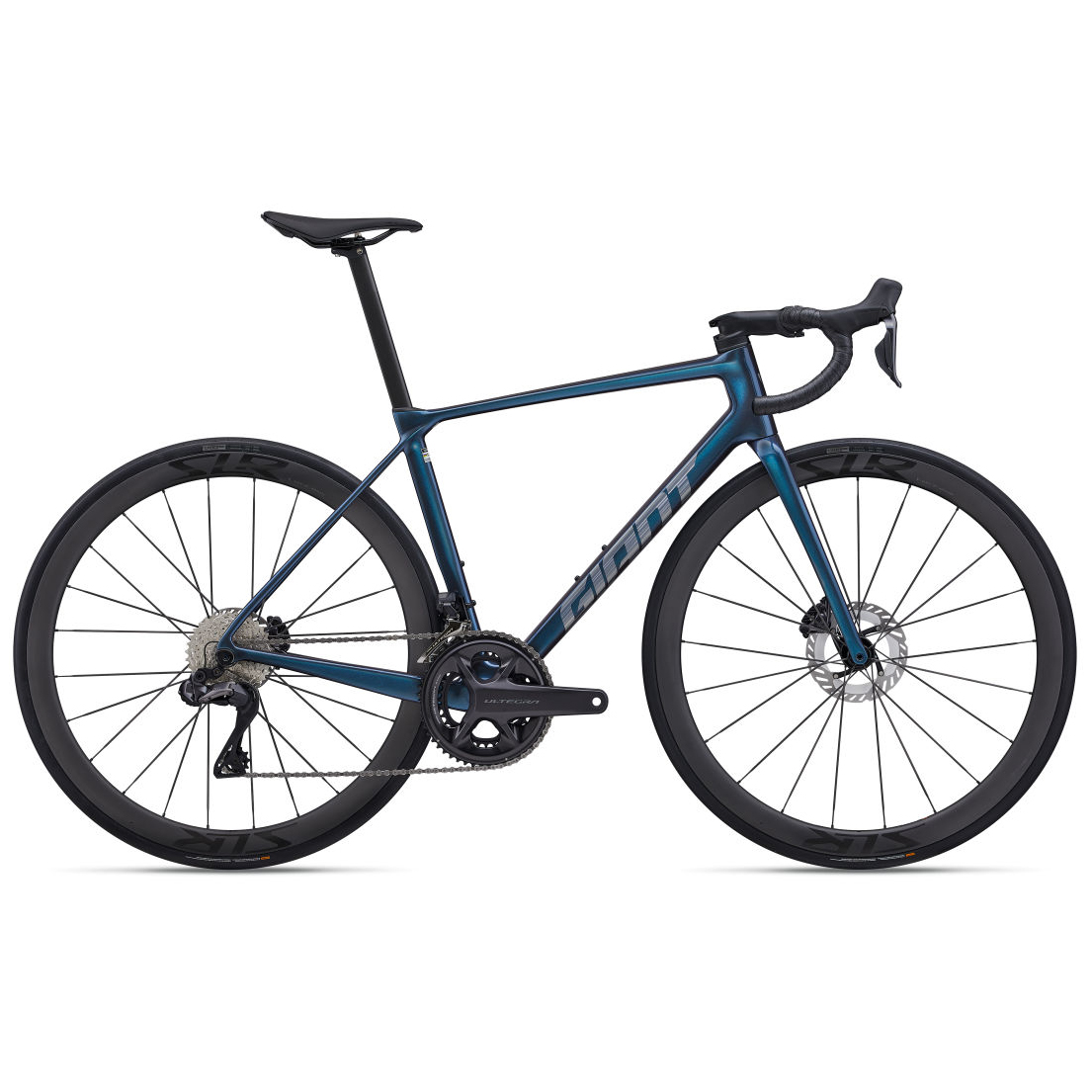
The TCR's ride quality superbly balances stiffness with weight, offering lively handling characteristics that almost anyone could get on with.
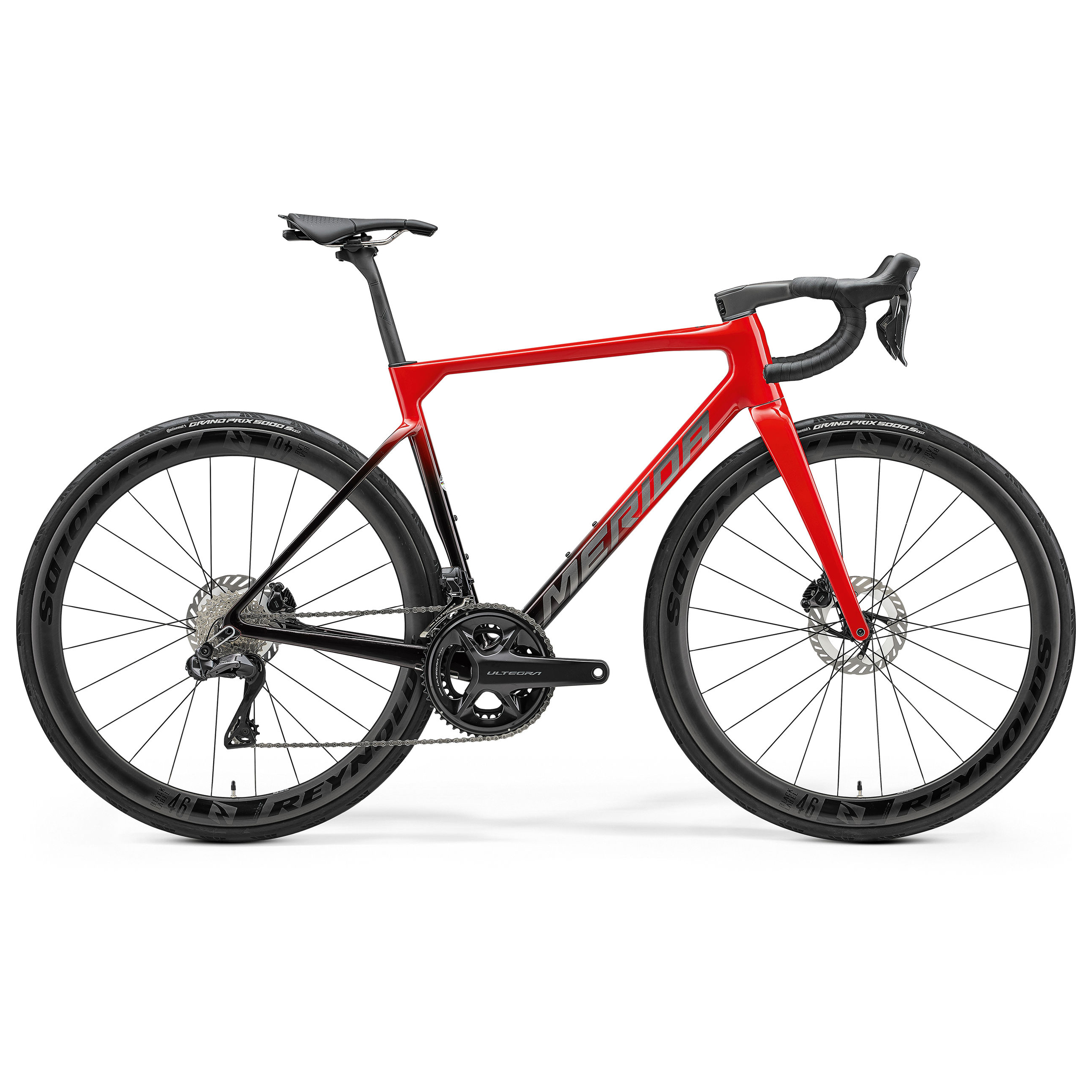
Finding good value race bikes that focus on performance can be few and far between, whether it's due to Merida's dominance in far-eastern manufacturing or simply smart choices. Either way, the Scultura range offers hard-to-match value.

Another Giant in our best road bikes roundup that offers excellent value. The Advanced Pro 1 offers all the speed and fun of the flagship aero bikes, but at a fraction of the cost.
Best road bikes we’ve tested at Cycling Weekly
Best road race bike

Specifications
Reasons to buy
Reasons to avoid
We awarded the Tarmac SL8 with our Race Bike of the Year award, essentially because of its ability to do most things exceptionally well. It makes it such a well-rounded offering, and it’s little surprise that it’s excelled at the WorldTour level over such different parcours.
Frame-wise, the SL8 makes a few changes from the SL7. There are more rounded tube designs and the ‘speed sniffer’ head tube. The former are inspired by Spesh’s featherlight wonder bike, the Aethos, and it helps make the SL8 lighter - a claimed frame weight of just 685g - and yet proportionally stiffer than the older model. However, fans of the SL7 will be pleased that, in terms of geometry, the SL8 is happy to follow suit.
So, how does it all impact the ride quality? We’ve ridden the bike for over a year, and it remains as good as it did on our first test ride. The slim seat post adds compliance and, in turn, comfort, as does the rear end of the bike. Given that you can fit 35mm wide tyres here, the SL8 can make genuine claims to being a racing thoroughbred that you could also ride year-round if you so wished.
Indeed, much of the bike’s appeal is that it can handle such a variety of terrain, while still having that top-end speed and acceleration that’s a must for a true racing machine. We’ve ridden at a high level in Europe, and we can safely say that few, if any, bikes perform as well across all the categories.
- Read our full Specialized S-Works Tarmac SL8 review
Best budget road bike

2. Giant Contend SL 1
Our expert review:
Specifications
Reasons to buy
Reasons to avoid
The Giant Contend SL 1 truly shines as a beautifully crafted alloy road bike. Priced comfortably under £2k/$2.4k and weighing just 9.5 kg, it offers excellent value, solid performance, and incredible versatility.
Built on a sturdy Giant ALUXX SL-grade alloy frame with a full carbon fork, this bike features a balanced geometry that’s perfect for both sporty rides and endurance adventures. It’s quick and stable, thanks to the well-designed 412 mm chainstay, and the Overdrive steerer provides precise steering, although you might notice the feedback more on rougher roads. Shimano’s 105 12-speed groupset shifts smoothly, and the non-series chainset does the job well. The hydraulic brakes, paired with Giant rotors, deliver sharp and confident stopping power.
The tubeless-ready P-R2 wheels, combined with Gavia Fondo 2 28mm tyres, are tough yet not too plush, giving you nice room for upgrades if you desire. The composite D-Fuse seatpost helps smooth out road buzz, although the saddle—Giant’s Approach—might not suit everyone perfectly because of its traditional long shape.
What truly makes the Giant stand out is its lively, playful handling, especially when you lower the front. I found it remains stable during descents and tight turns, without kicking back if you make a mistake. All in all, the Contend SL 1 shows that you don’t need carbon to enjoy a fantastic ride.
- The Contend SL 1 was part of a four-value road bike group test under £1800/$2400 where it was named best on test
Best endurance bike
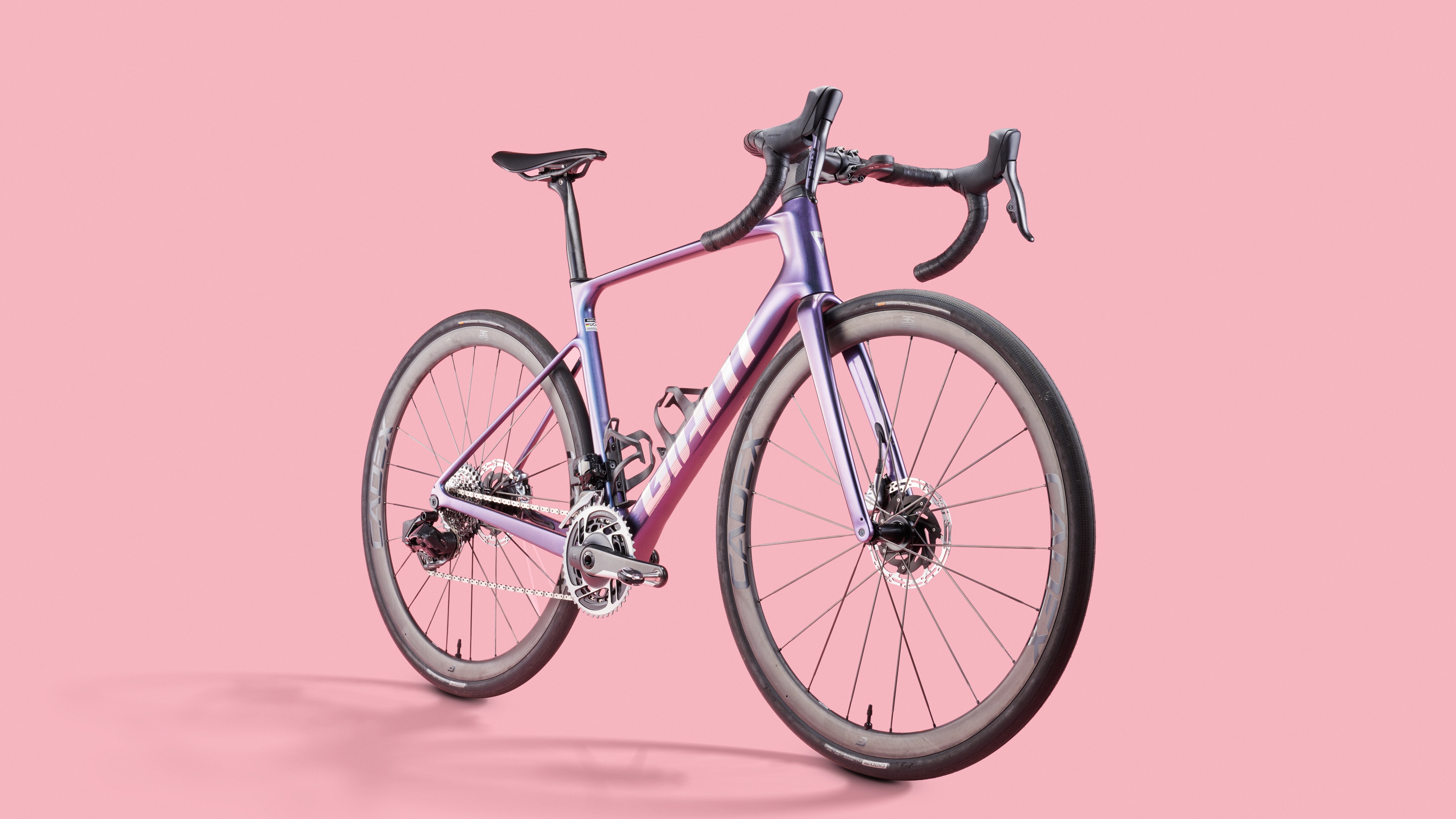
Specifications
Reasons to buy
Reasons to avoid
The Defy has been a stalwart of the endurance category for years, and the latest version suggests that it will remain there.
As with all Giant road bikes there is an extensive range on offer, from the entry-level Advanced models to the range-topping Advanced SL 0, which we’ll cover here.
The frameset has been overhauled and now uses a carbon layup that’s designed to reduce weight while increasing strength. Giant says the SL has seen an almost 30% increase in the stiffness-to-weight ratio, with the frame weight reduced by 200 grams. But being a bike designed for long days in the saddle, there’s a focus on comfort, too. Tyre clearance is up, now with room for tyres as wide as 38mm. There’s also the D-shaped stem and bars, designed to flex and in doing so add comfort. The SLR D-Fuse also benefits from redesigned tops and a gravel bike-style 8º flare on the drops.
On the road it all blends together to create a bike that eats up poor road surfaces, making light work of surfaces that we’d usually find a struggle. The relaxed geometry and longer wheelbase help too, making the Defy a steady ship even when the going gets rough. Giant suggests it’s ideally suited to sportives and gran fondos, and we’d concur. It’s also a great match for any cyclist who racks up the miles of varied terrain, and values luxury and comfort over all-out speed. Think Bentley rather than Ferrari.
- Read our full Giant Defy Advanced Pro SL review
Best value road bike
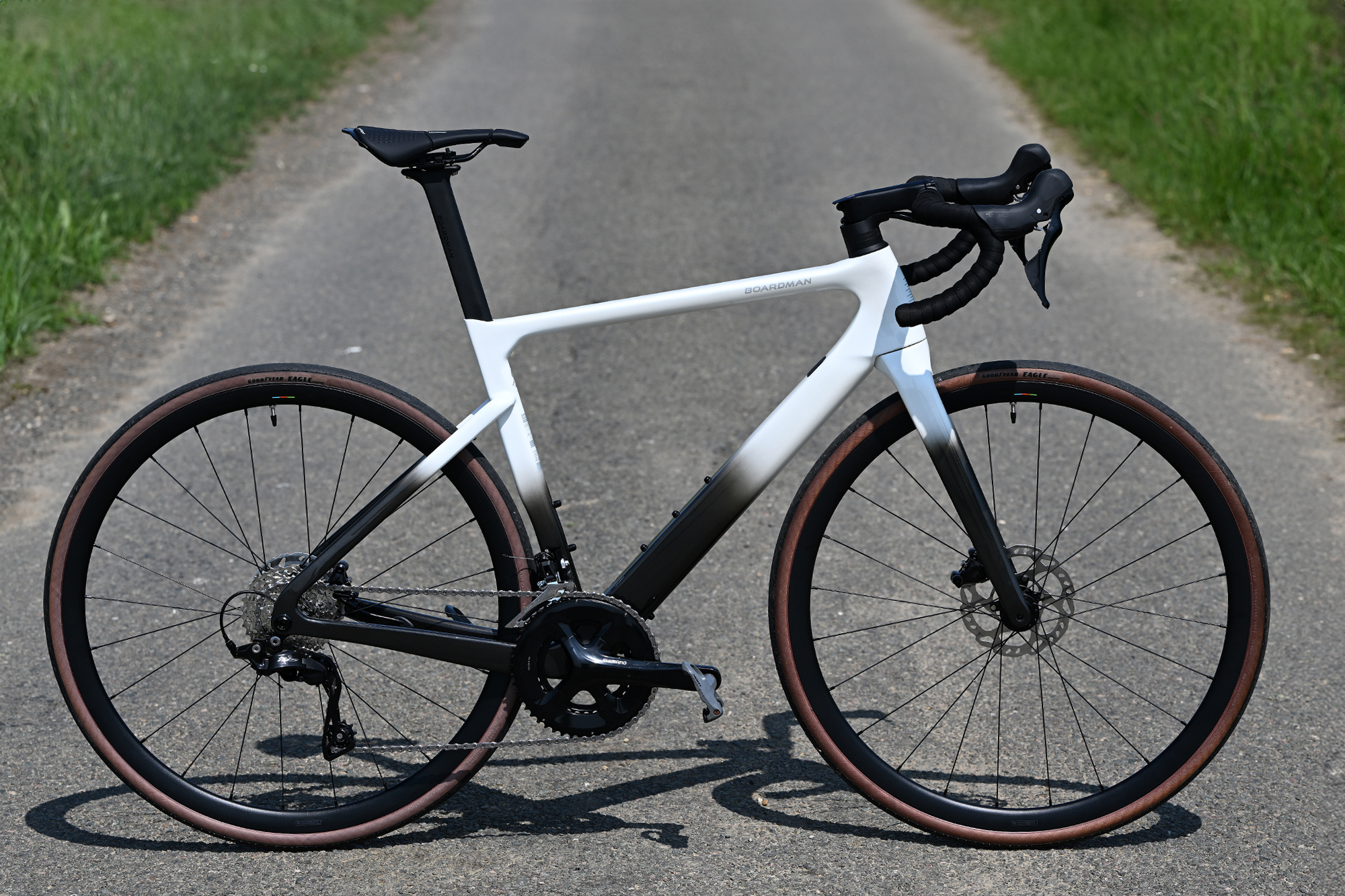
4. Boardman SLR 9.0
Our expert review:
Specifications
Reasons to buy
Reasons to avoid
It is hard to ignore the Boardman SLR 9.0's looks, even when its value in the specification is somewhat mind-blowing. The full carbon frame, fork, and steerer, along with that stunning off-white to metallic black fade, really caught my eye; however, digging down and swinging a leg over, you find it is much more than that.
The Prologo Scratch M5 saddle felt spot on, and those GoodYear Sport 30mm tan-wall tyres are standouts in any conditions. The Alex wheelset remained true and spun smoothly throughout testing. Additionally, they're tubeless-ready, which is good to see for possible affordable upgrades.
I found the D-shaped seat post to be very compliant, and the two lay-back options were a thoughtful feature, which is uncommon in more budget-oriented models. The cable routing uses a two-piece cockpit with a fairing, offering a good balance between flexibility and unobstructed shifting of the Shimano 105 mechanical groupset. This highlighted how excellent modern mechanical shifting has become.
Despite its aggressive appearance, I appreciated its practicality, with cleverly hidden mudguard mounts and additional bottle bosses. The ride quality was excellent, with no harshness, and out-of-the-saddle efforts felt stable. While the handling offered neutral feedback, it was never dull – ideal for riding with friends or setting a new sportive PB. The SLR 9.0 aims to perform many roles and does so effortlessly.
- The Boardman SLR 9.0 was part of a four-value road bike group test under £1800/$2400 where it was named best value on test
Best women's road bike
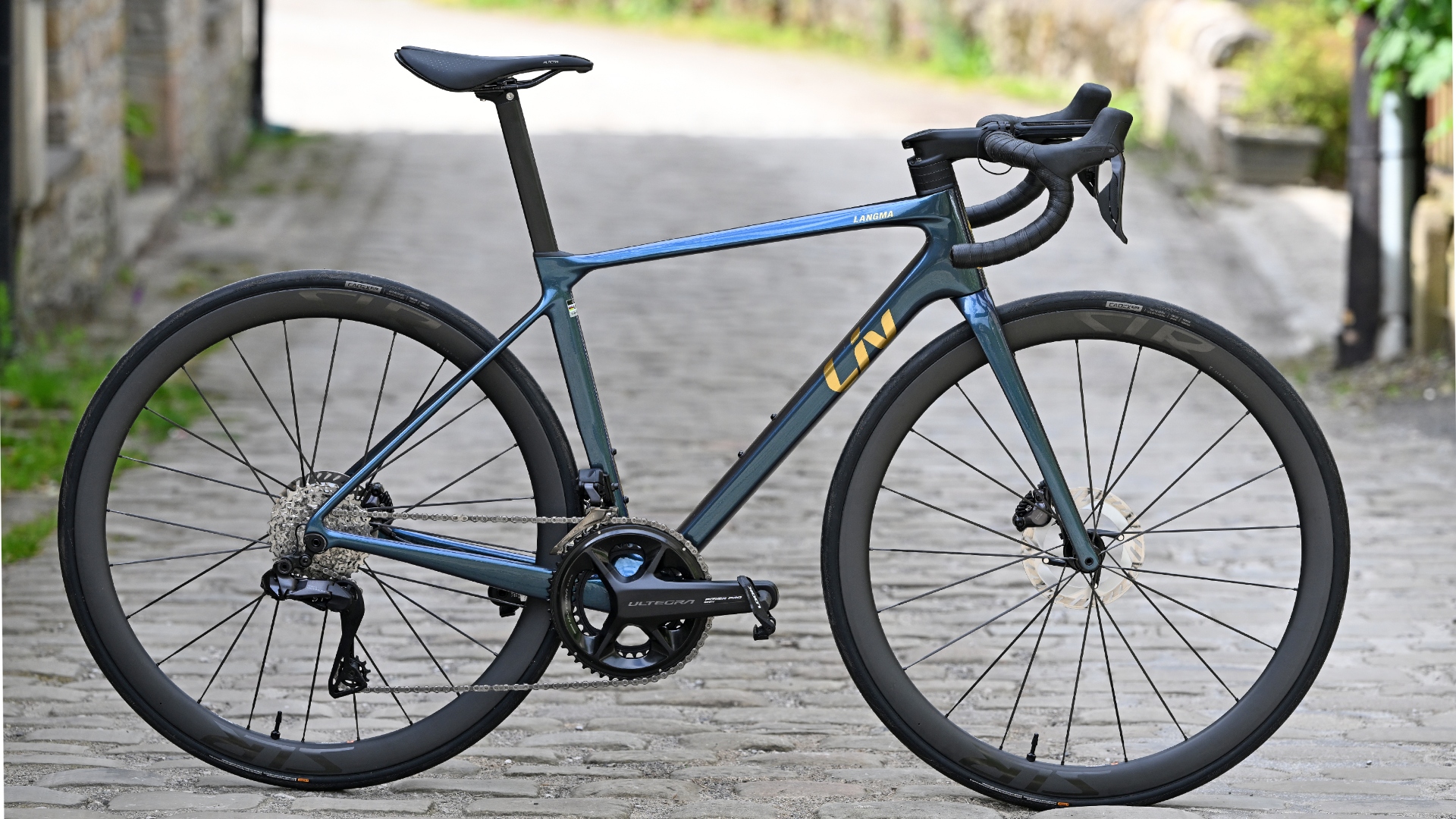
Specifications
Reasons to buy
Reasons to avoid
The latest Liv Langma is a pure race bike. It's monocoque carbon frame is both light and stiff, with new airfoil sections and fully integrated cables to reduce drag and ultimately the bike faster.
And it works. During testing we couldn't fault the Langma on the flat, delivering plenty of stiffness that translated to quick accelerations and plenty of urgency. But what makes this bike great is its ability to shine across the board. We took it up and down steep climbs as well on long, all-day rides and it excelled at both. It's surprisingly stable for a bike that's so light and agile, and there's little compromise when it comes to comfort too, given it's racing pedigree.
As for the components, the Pro 0 comes equipped with both the redesigned Liv Contact SLR bars and a Cadex Max 40 wheelset alongside the reliable Shimano Ultegra Di2 groupset, which delivered an impeccable shifting and braking experience throughout the review period.
- Read our full Liv Langma Advanced Pro 0 review
Best aero bike
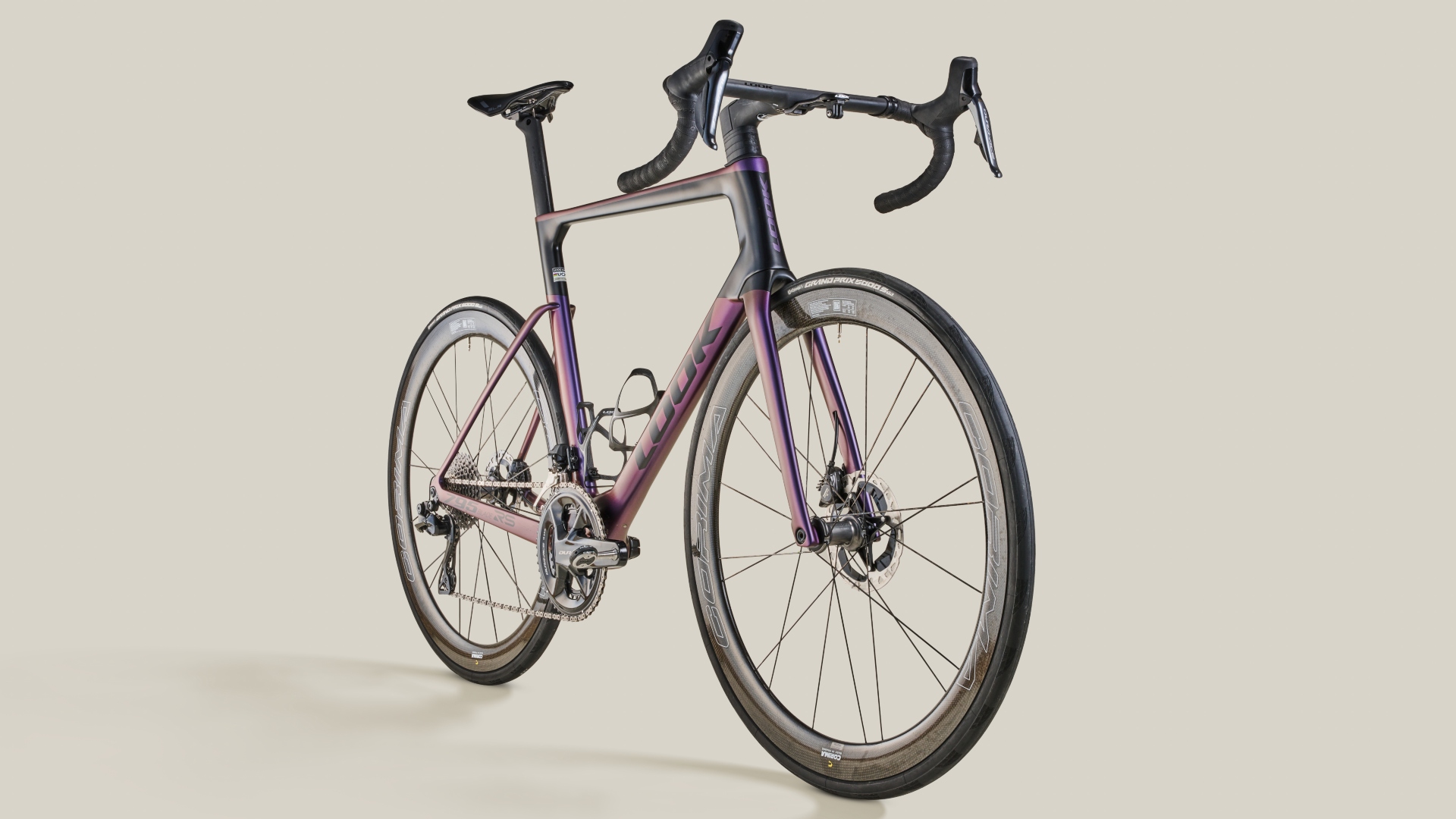
Specifications
Reasons to buy
Reasons to avoid
There’s a lot to like about Look’s aero bike, the 795 Blade RS.
It’s WorldTour approved, ridden by the Cofidis team, and stunning to look at. The frameset isn’t the lightest, but the weight has been used wisely, adding stiffness where you want it but without sacrificing compliance; it features 25% Ultra High Modulus carbon in specific areas of the frame to achieve this balance. We certainly noticed the stiffer bottom bracket during our testing, providing us with a snappy ride feel that we’d expect from a bike of this ilk.
The tube shapes are somewhat slender compared to others in this category, and we feel this adds to the bike’s versatility. Yes it’s fast on flat and rolling roads, accelerating quickly and with ease without a hint of movement in the BB area. But it also climbs surprisingly well (our review model weighed 7.48kg for a full Dura-Ace Di2 build) and delivers a relatively comfortable ride for what is an out-and-out race bike. Combined it left us impressed enough to designate the 795 Blade RS the title of ‘best aero bike in our most recent Race Bike of the Year awards.
- Read our full Look 795 Blade RS review
Best climbing bike
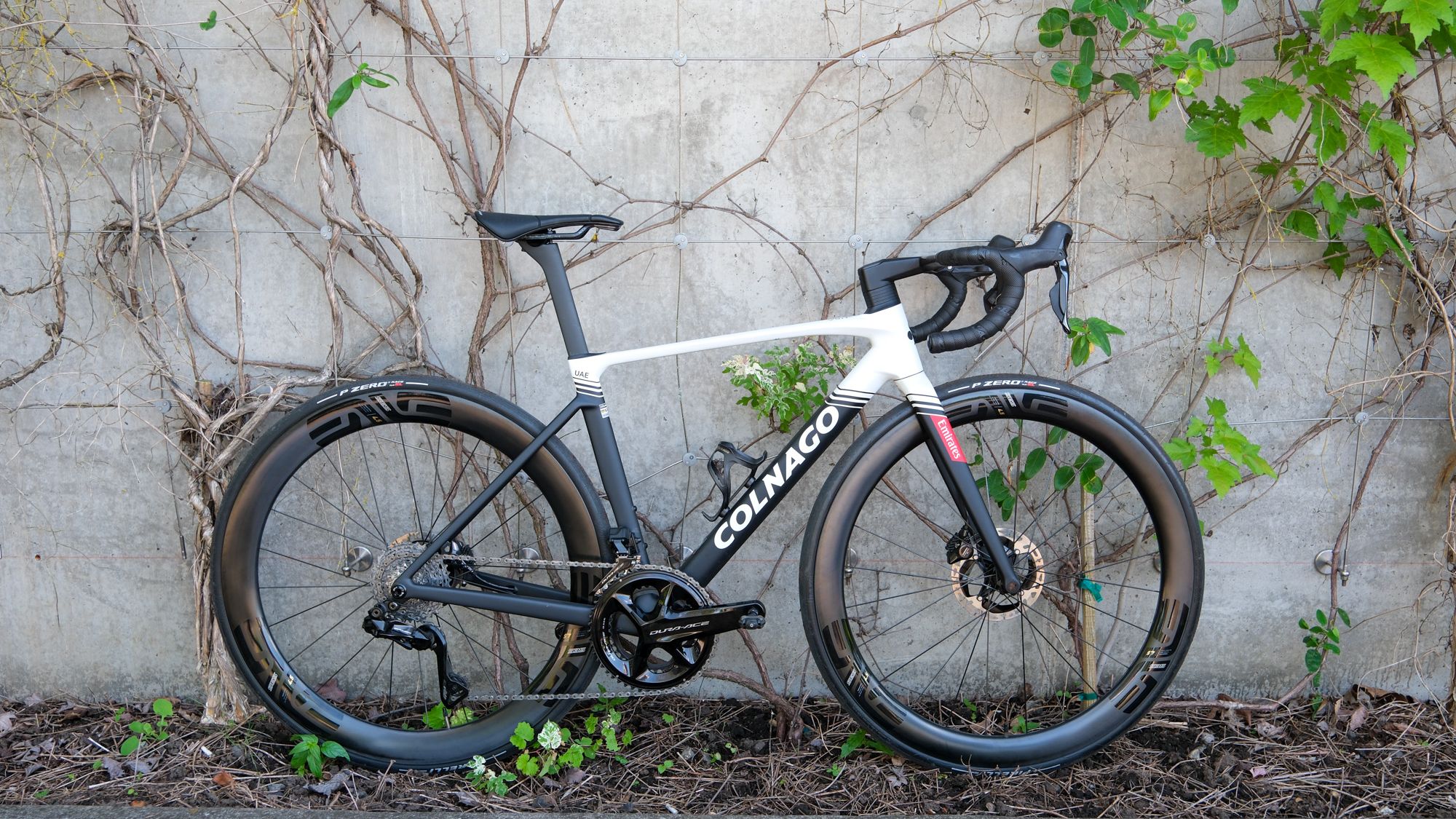
Specifications
Reasons to buy
Reasons to avoid
After yet another nominatant season for Tadej Pogačar see him with the most wins of anyone in the world tour, with almost all of which were had either on the V5Rs or the Colnago Y1Rs. Given how understated the former is compared to the latter of the two Colnago models, I was intrigued to find out what Tadej loves so much about this bike and why he still regularly chooses it over the more radical Y1Rs.
Starting with the basics, it's 12% lighter, 9 watts faster, and has a slightly tweaked geometry compared to its predecessor, the Colnago V4Rs, which we rated five out of 5 back in 2022. Much of this performance gain is due to its shared development with the polarising Y1Rs.
What really struck me about the V5Rs wasn't its ride at all. It was how many of my riding friends had noticed just how often I was riding it. As you might expect from someone who tests bikes professionally, it's rare for my riding buddies to see me on a bike more than once or twice, but the V5Rs quickly became the bike I kept reaching for.
While it didn't 'Wow' me immediately, take that with a pinch of salt, as there is a lot to like about this bike. In particular, the V5Rs' handling. The front end is stiff but not punishing, it's light but not twitchy and remarkably balanced. It's this understated composure that makes riding so enjoyable. Trust is everything when you are riding fast, and the Colnago builds that quickly and never breaks it.
I can only see one slight downside, and for a 'climbers' bike, it's a touch heavier than others; however, they are likely not as aero, so it's much for muchness. I won't even go into the price. If you are considering a Colnago, you likely will know thats an investment or money is no object. I will leave you with this; the V5Rs is very capable. From the moment I clipped in, I felt at home. As I no longer race, I think I would be more at home on Colnago's C-Series bikes; however, for those who do want to pin on numbers, this is a mega bike.
- Read our full Colnago V5Rs road bike review
Best women's road race bike

Specifications
Reasons to buy
Reasons to avoid
The Filante SLR is here in the women's section because rather than be a women-specific model it is instead a road bike that's offered in both a full range of sizes, down to XS, as well as benefitting from Wilier's Accufit system that enables smaller riders to dial in their fit; the carbon cockpit comes with five stem length options and there are also spacers that allow the bike's stack to be increased by as much as 35mm. Add in a couple of seat post variants and you have a bike that can be easily customised.
To achieve a light but stiff bike, the carbon frame's construction uses liquid-crystal polymer that translates to plenty of strength without the weight. There's also a super-wide fork that's designed to aid airflow and thus reduce drag.
During our testing we came to love the blend of speed and stiffness but also the comfort too. It's the latter attribute that had us believing that the Italian brand had successfully redefined just what an aero bike can be.
- Read our full Wilier Filante SLR review
Best all-road bike
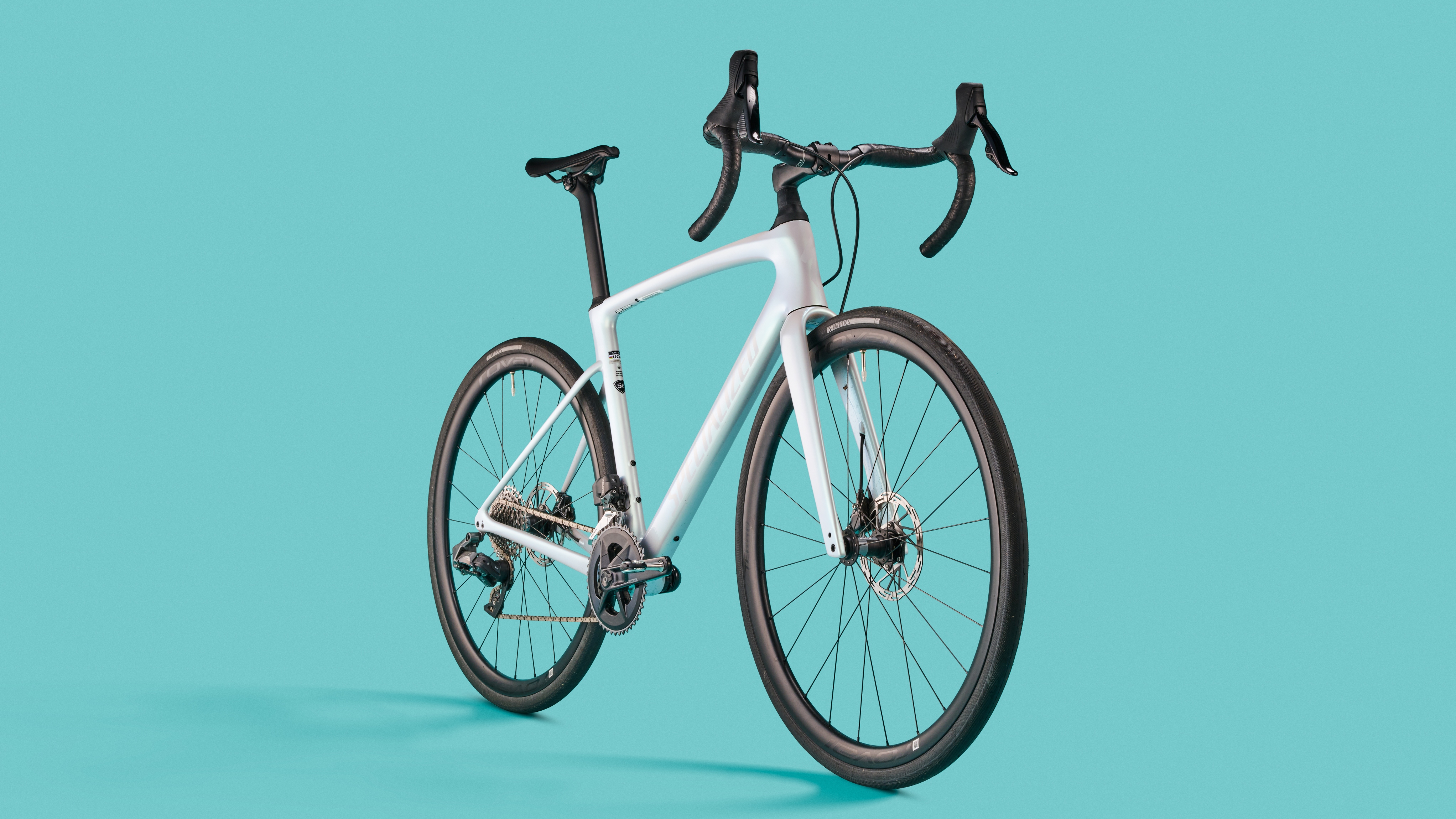
Specifications
Reasons to buy
Reasons to avoid
The latest Roubaix sees a number of changes from previous models. For an endurance bikes, the most significant of these are the wider tyre clearance, up from 33mm to 40mm, the subsequent longer wheelbase and the updated Future Shock suspension - the Expert model is fitted with the Future Shock 3.2, which has no on-the-fly adjustment but is hydraulically damped and can be readily made firmer using different springs and preload washers.
All three were notable during our testing. On rough roads and indeed off-road, the Roubaix had the ability to take the sting out of the toughest sections or tarmac, path or trail, with the front end suspension seemingly doing the lion’s share of the work. The wide tyres certainly help too, and adding a wider contact patch. We particularly enjoyed descending on the Roubaix where the three elements combined to provide us with additional confidence. The Future Shock does have its drawbacks, however. On steeper climbs, out of the saddle we found that the notable bounce impacted our efficiency.
- Read our full Specialized Roubax SL8 review
Best value climbing bike

Specifications
Reasons to buy
The TCR is Giant’s lightweight all-rounder. It’s offered across a range of builds and price points (we've ridden and highly rated the top-tier SL 0 model too) but we feel its the Advanced Pro that really does offer great value for money.
The current model differs a little from our review bike and now features fully integrated cabling and a new cockpit; the former is aided by the OverDrive Aero steerer tube technology, with the Contact SL AeroLight stem and Contact SL handlebar finishing the job off. Vitally you still get the Giant Power Pro power meter that impressed us so much, and helps the bike to secure its ‘value for money’ standing.
The ride quality is superbly nuanced. There’s just the right amount of stiffness but given this is a lightweight climber it’s balanced to deliver a lively, springy feel. We found it inspired confidence whether we were going up hill or coming down; again Giant have struck the right balance here between comfort and connectedness.
Components vary depending on the model, but the current TCR Advanced Pro 0 gives you a full Ultegra Di2 12-speed groupset, with the aforementioned power meter, as well carbon Giant SLR 40mm wheels. At this price point it makes it as competitive as they come.
- Read our full Giant TCR Advanced Pro 0 review
Best value race bike
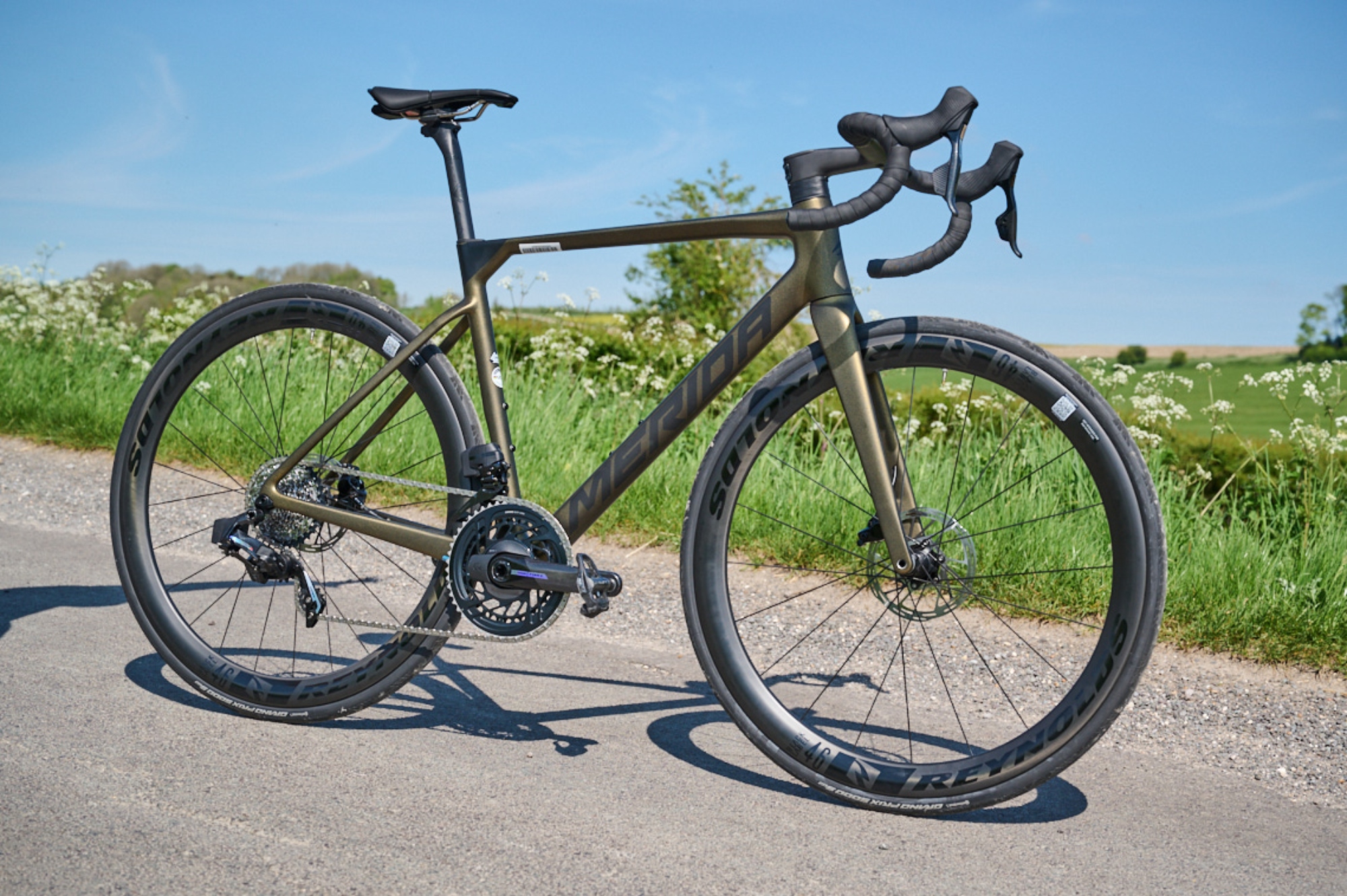
Specifications
Reasons to buy
Reasons to avoid
Good value race bikes aren’t commonplace and the Scultura is far from a budget offering. But for bikes that’s ridden on the WorldTour it does offer plenty for its price tag.
The frameset uses Merida’s top-of-the-line CF5 carbon layup; it uses a percentage of high modulus fibers to deliver an impressive stiffness-to-weight ratio. As a genuine do-it-all race bike it eschews deep aero tubes for something far rounder, designed to reduce weight while adding compliance. There’s also fully integrated cabling and a one-piece carbon cockpit with a claimed weight of just 280g. As for the geometry, it’s as aggressive as Merida’s Reacto aero bike, which will be a bonus if you’re looking for a long and low position on the bike.
Out on the road, its stiffness is apparent at all times, delivering a rock solid bottom bracket and a planted head tube, which makes for quick acceleration and confidence-inspiring descents. The rigid rear end makes it agile and responsive, allowing us to corner with speed and precision. Naturally, this doesn’t translate to all-day comfort, but that’s not what this bike is designed for.
The CF5 frameset is offered in different build options, with the 9000 equipped with Shimano Dura-Ace Di2, and our test bike, the 8000 using Sram Rival AXS. Either way you get a sub 7.5kg race bike for a truly competitive price. And if that’s still outside your budget, we can also highly recommend the 6000, which uses the CF carbon layup and shifts gear via the ever-reliable 105 Di2 groupset.
- Read our full Merida Scultura 9000 review
Best value aero road bike
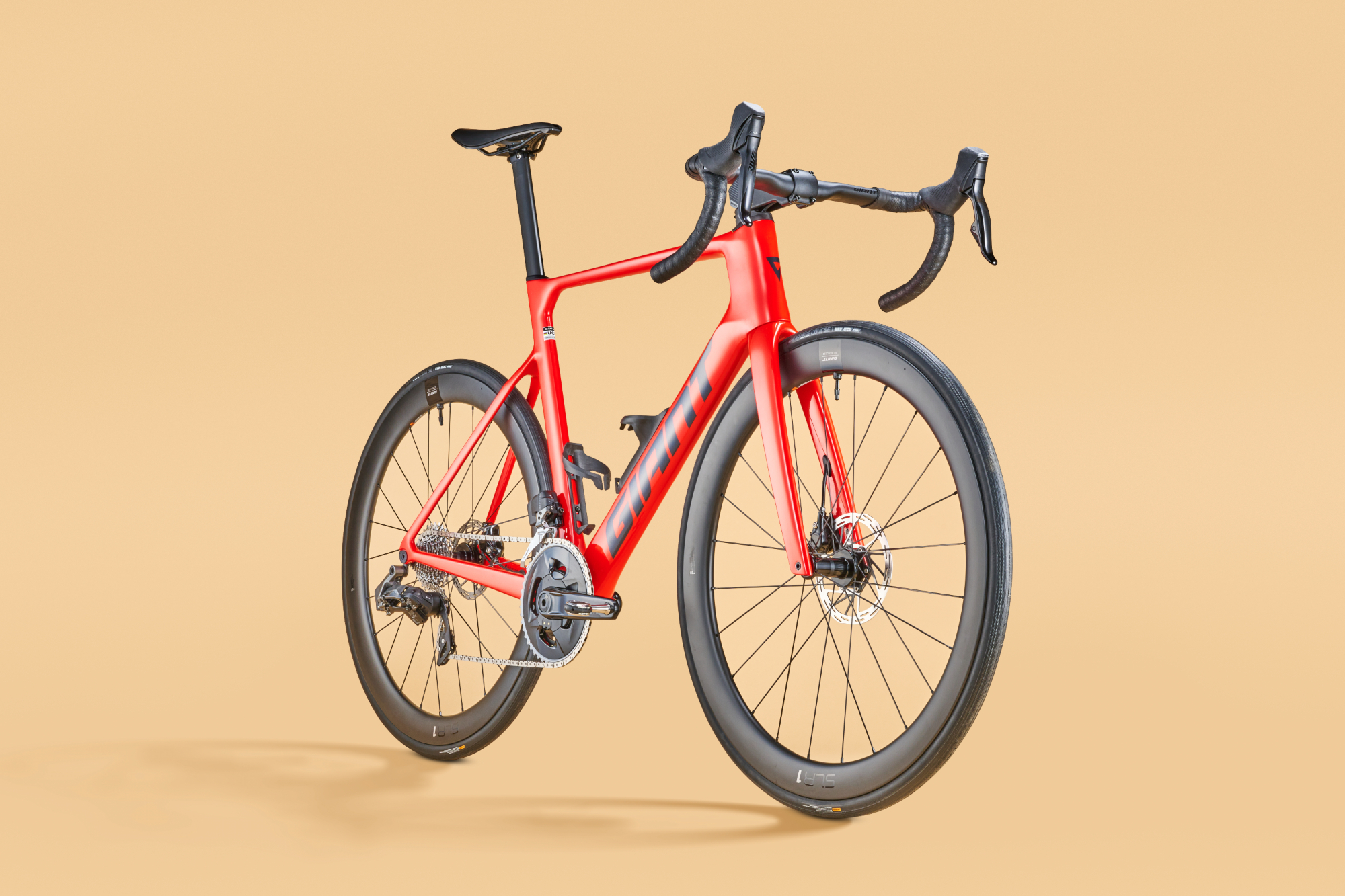
The Giant Propel offers a lot of bike for its price
Specifications
Reasons to buy
Reasons to avoid
The Propel has been around for some time, and has long been one of the best aero bikes on the market striking both a competitive level of performance and price.
The current offering is available as always in an array of models and builds, but it’s the Advanced Pro that we’re focusing on here. The current frame design is less aggressive than previous iterations as Giant sought to add weight and comfort to the aerodynamic considerations. That said, even with the noticeably slimmer tube shapes Giant says this Propel is over 6 watts faster at 40kph than the previous model.
At this level you get a frameset made from Giant’s Advanced Grade Composite, which is the second-tier offering. The brand’s OverDrive system means fully integrated cables via a D-shaped steerer and a new bar and stem design. The result is improved aerodynamics and a far cleaner look in general. As for its geometry, it’s classic 73° parallel angles meaning the Propel isn’t solely an aero bike for special occasions but rather one that can also be an everyday bike for every situation.
During our testing we appreciated how it balanced speed and stability. The slimmer tube shapes made it less susceptible to crosswinds, while the wider tyres and rims combined with improved vibration damping from the front end to create a smooth ride.
At 8.46kg, equipped with Sram’s Rival AXS groupset, it’s by no means a light bike, but the aero enhancements mean that on all terrain other than the steepest slopes, the Propel excels. In fact, we’d be happy to use it as our ‘one and only’ road bike.
- Read our full Giant Propel Advanced Pro review
How we test the best road bikes
We have a dedicated team of testers here at Cycling Weekly, whose job is to review a wide range of cycling products and write objective reviews based on their daily experiences with them in various conditions.
With extensive experience, they're well-placed to compare products, identify their strengths and weaknesses, and provide you with an honest and unbiased assessment of how they perform.
When it comes to testing road bikes, we log hundreds of miles, examining several factors as we assess their overall performance. Of course, we consider what the bike is primarily designed for, whether it's an aero race bike, a lightweight climber or an endurance model, but also look at more general considerations such as build and spec quality, durability and value for money.
During this testing, our reviewers utilise their regular testing routes to isolate skills such as descending, climbing, and sprinting, allowing for direct comparison against other models they have tested, which should be reflected in any review write-up. By completing these base miles and having a repeatable route, it can also provide comparable data, such as average speed, and, of course, a sense of familiarity over a variety of surfaces.
These routes should feature as wide a variety of terrain as possible, including one long climb, one short and sharp, a long drag, a flat and exposed section, as well as a decent and, if possible, some urban traffic-heavy areas.
Each reviewer is expected to complete at least one long ride on every bike; we consider this to be anything from 60km to 100km or more. If possible, we would usually participate in at least one group ride or race.
Learn more about our testing of the best road bikes and all the products we review over on our How We Test page.
Meet the testers

Hannah is our lead female reviewer and longest-serving tech writer, having been testing kit and bikes for 14 years. In a previous life, Hannah was an elite racer, competing on the global stage. Hannah loves nothing more than covering big miles with a fair few hills in them, which are somewhat unavoidable where she now finds herself in the heart of the Peak District National Park.

Andy knows his way around a road bike. After spending much of his adult life riding them but also fabricating and designing them to for his brand Spoon where he build some of the worlds most desirable custom bikes. Andy is a champion of the highest standards in fit, fabrication and finishing. Find hills isn't the easiest of task where Andy has recently chosen to settle in Norfolk, he regularly travels to the Alps where he once lived as a ride guide.

If its got wheels and you can ride Joe is on it. Joe's love of bicycles is infectious and loves nothing more than taking on a challenge. After taking a step back from elite level racing in 2022, where he had achieved feets such as National Hill Climb Champion in 2018 as well as regularly racing on the continent at U23 UCI 1.2 level.
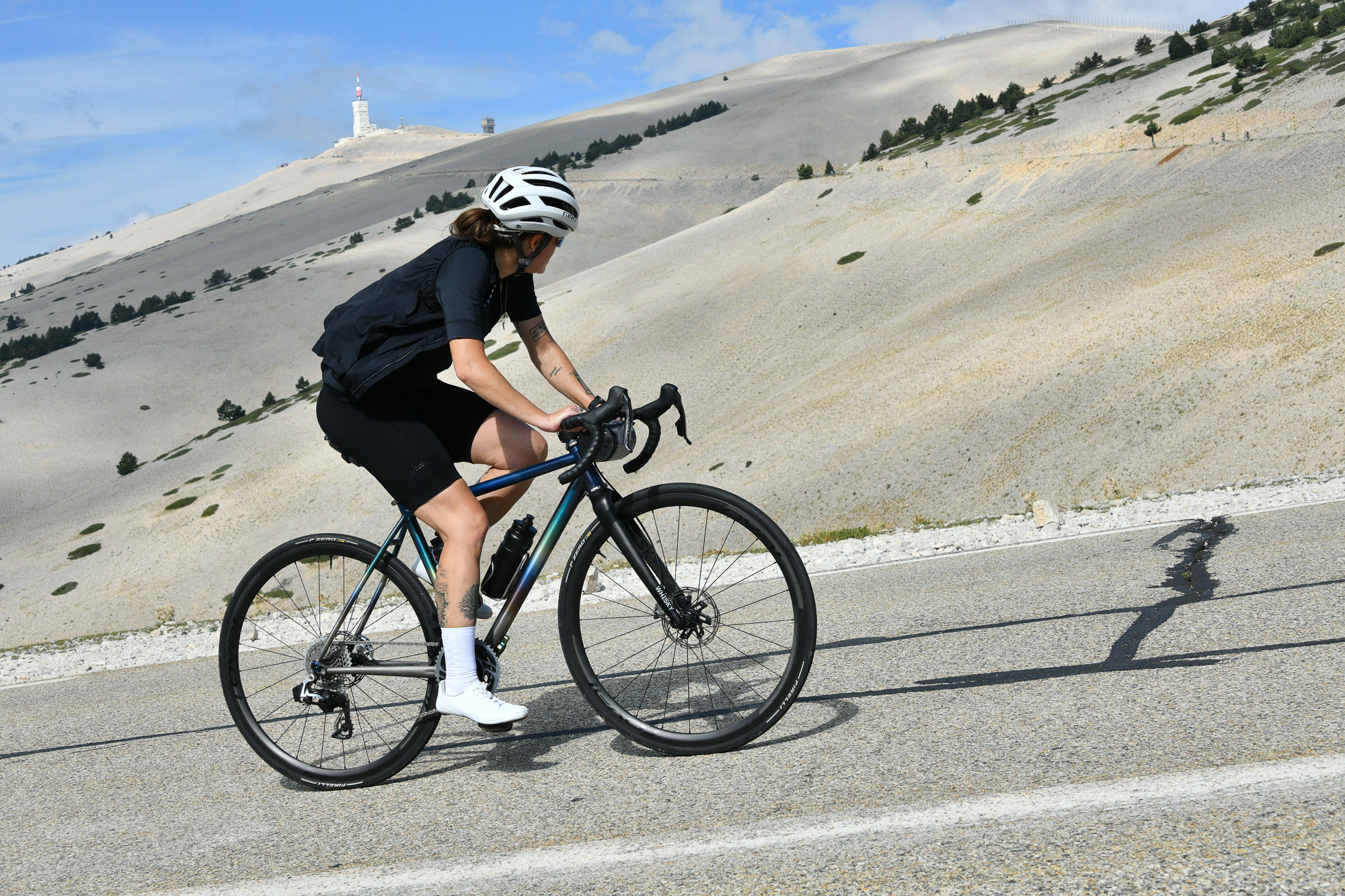
Rook, as she likes to be called, is a prolific cyclist. A day doesn't go by that she isn't turning some pedals, and while that is less frequently in anger, her experience and miles make her one of the most valuable opinions here at Cycling Weekly. While covering miles doesn't qualify as a definitive measure, the sheer variety of Rooks riding means she can really nail down where a bike works and doesn't.
Types of road bikes and what are they good for?
The bicycle industry likes to keep people on its toes, that is for sure. While something as relatively straightforward as a road bike might seem, it rarely is. Visually, road bikes mostly all sing from the same hymn sheet; however, they more often than not all have slightly different attributes. This is most commonly associated with a bike's handling and geometry, more often of late, a bike's level of performance, specifically aerodynamically. So, what are the different types of road bikes?
Road Race Bikes
Good for: all-around performance, one bike garage for climbing, aerodynamic performance, and mixing it up in the bunch. Great for riders who can get into an aggressive position.
The term road race bikes is pretty self-explanatory. These bikes are designed to be fast and offer riders the best all-around performance. Thats not to say they are only for race use, though. For those who like to ride fast, test themselves and prefer a bike with more direct and agile handling.
A great example of this style of bike is our Road Race Bike of the year, the Specialised Tarmac SL8.
Why not check out our complete guide to the best road race bikes
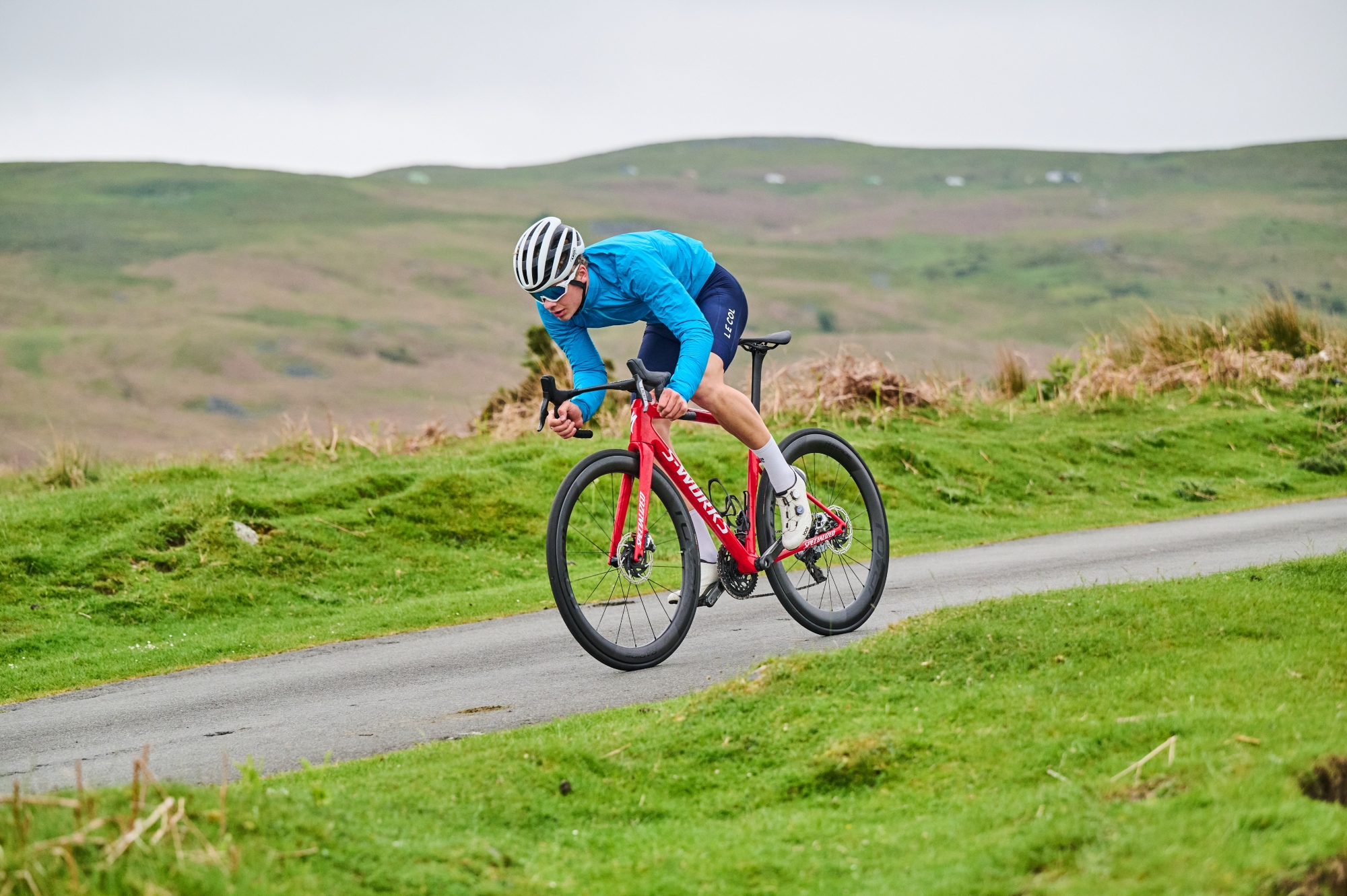
Endurance/All-Road Bikes
Good for: covering big miles in comfort by offering more relaxed positions. They can also tackle more challenging terrain, such as the cobbles of Paris-Roubaix.
Don't be fooled by the words comfort or relaxed; the best endurance road bikes can still pack a turn of speed, especially when the roads or terrain are less than favourable. What distinguishes most endurance road bikes is their more upright position, which is better suited to the flexibility levels of most cyclists. In recent years, the tyre clearances of these bikes have dramatically increased, offering a reasonable amount of crossover with the best gravel bikes, leading people to brand them as All-road bikes more regularly.
As I mentioned, the shifting nature of these bikes means there are still two quite different styles of bikes under the same definition. Check out the Specialised Roubaix SL8, which features big tyre clearance and suspension for an example of an All-Road bike. For a more out-and-out endurance road bike, see our review of the Giant Defy.
Why not check out our complete guide to the best endurance road bike
Aero Bikes
Good for: when the speed starts to ramp up or the wind comes into play. For those riding fast and looking to save watts over their competition or buddies.
Aerodynamics plays a significant role in modern cycling, but one must have a foundation to see the benefits. For most, saving a few watts here and there will suffice, while for many, their sleek profiles will be enough of an attraction. It's when speeds increase and the wind begins to factor in that aerodynamic bikes can make a substantial difference.
Aero bikes can be seen throughout the modern pro-peloton, but examples like the Cervelo S5 and Canyon Aeroad are uncompromising in their pursuit of speed.
Why not check out our full guide to the best aero road bikes
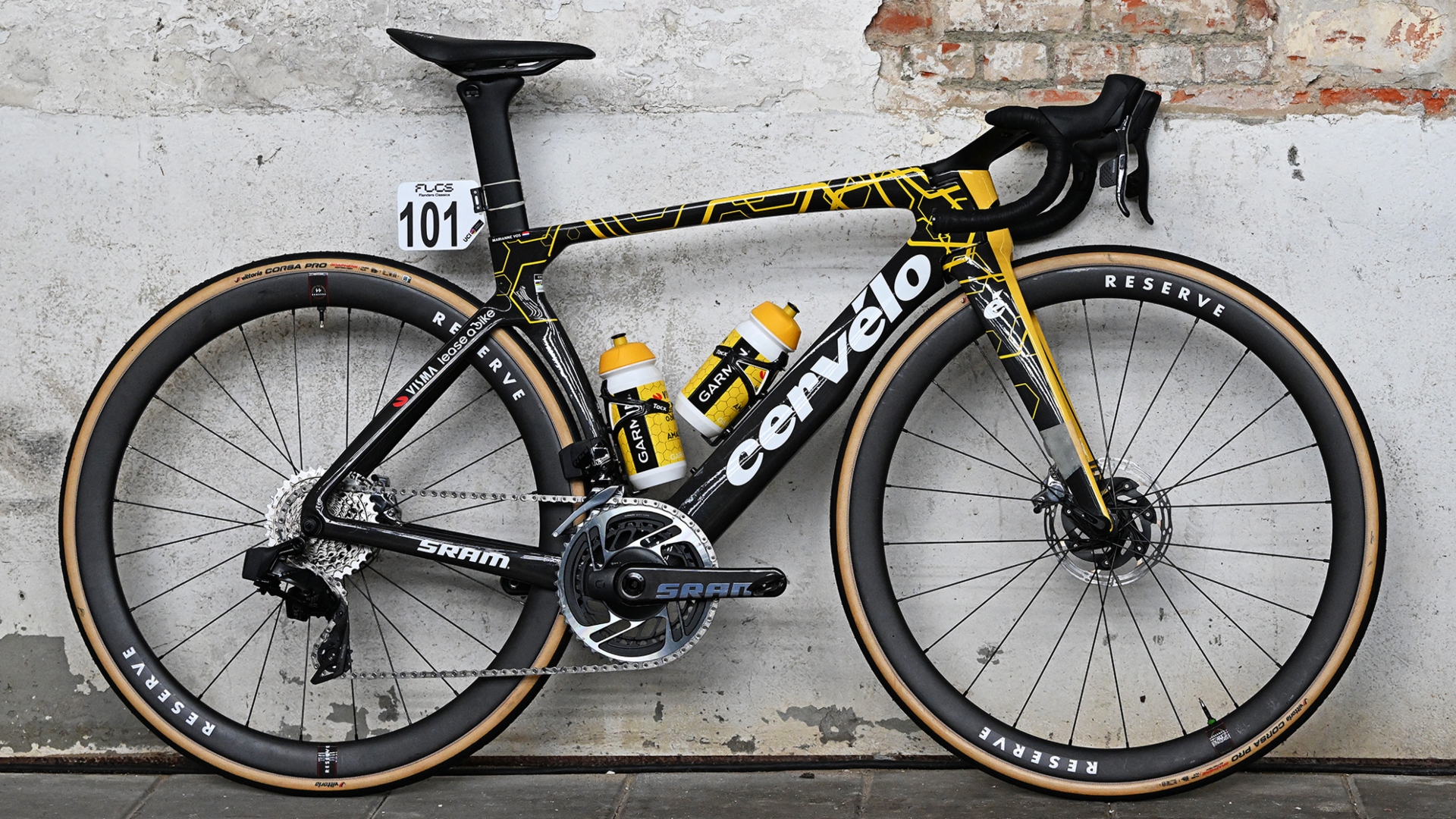
Climbing and Lightweight bikes
Good for: when the roads head up. Tackling long and steep climbs where every gram can make a difference. For those who care not about aerodynamics or riding on the flat.
What categorises lightweight bikes is their sole pursuit of offering the lightest weights, with suitable geometry and stiffness for climbing hills effectively. With road race and aero bikes adopting a more all-around approach to performance and their weights falling drastically, we have seen a decline in the focus on lightweight bikes. However, there are still some cracking bikes out there, and many will be attracted to their rounder, less aero profiles.
A shining example of the simplicity and minimalism that makes this style of bike so brilliant is the Specialised Aethos.
Why not check out our full guide to the best lightweight road bikes
Women's Specific Road Bikes
Good for: female riders and those of smaller builds.
While you certainly don't have to ride a women's specific bike, there can be a number of benefits, especially if you are a smaller or shorter rider. Women's bikes tend to offer sizing down to XXS and certainly offer more feminine colour options. When it comes to fit, form and specification, there is little to no difference between 'men' or standard road bikes. In reality, a lot of women's specific models are there to help brands differentiate their marketing. Don't let that deter you from considering one, as brands like Liv and their excellent range of Langma and Avail bikes feature prominently in our guide to the best women's road bikes, providing some truly outstanding options, sometimes even better than the standard versions.
Why not check out our full guide to the best women's road bikes
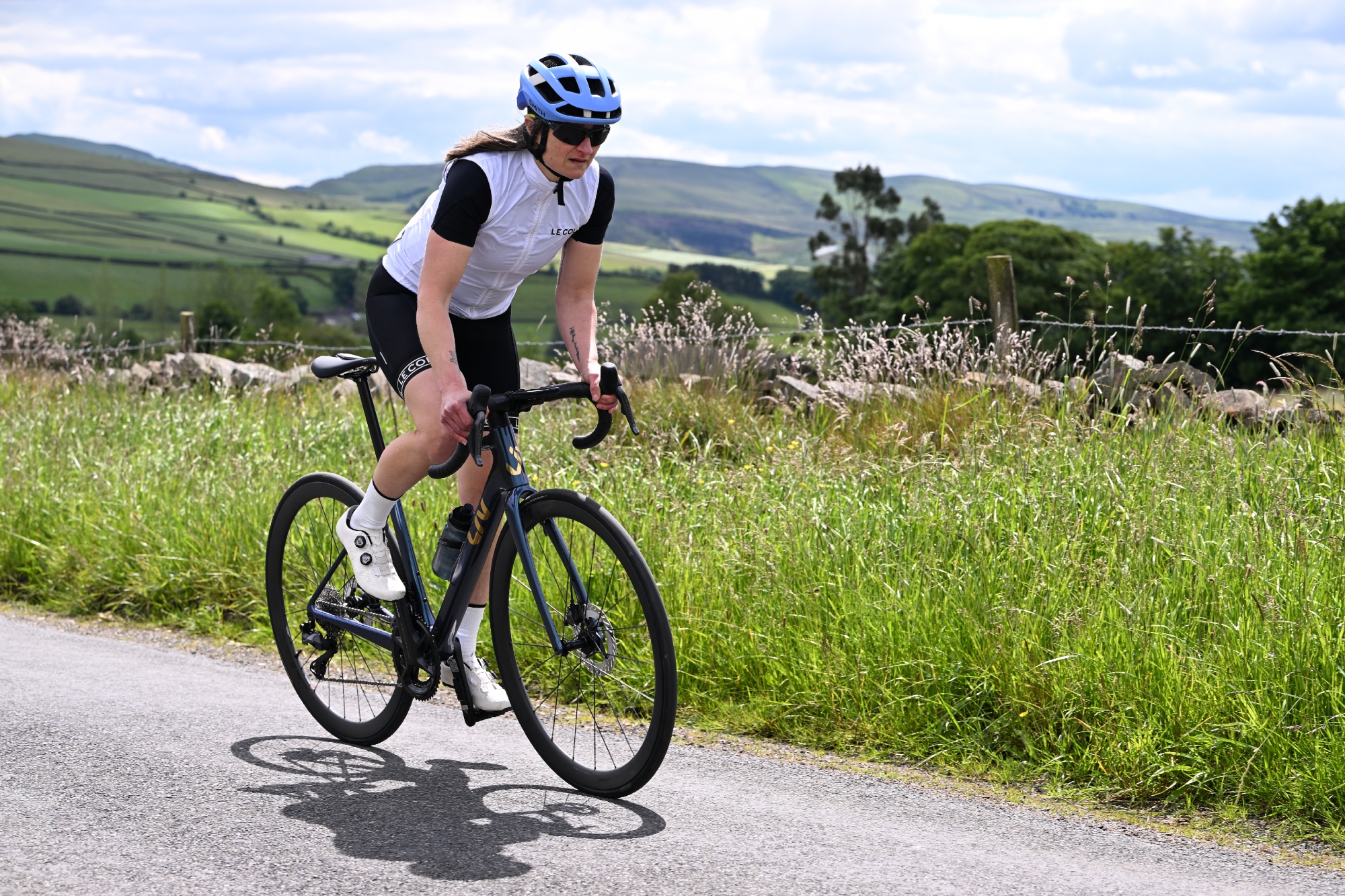
How to choose the best road bike for you
How do I choose the right size road bike for me?
Before you do anything, it is important to get the right size bike. Most bikes come in a range of sizes to fit your stature, and bike makers will usually publish a rider’s height range for which a bike of a specific size will fit.
You should feel comfortable seated on your bike and be able to put both feet flat on the ground when standing over the crossbar, without it touching you.
You’ll usually find more detailed frame dimensions listed too, which give you more details of how your bike will fit you. The most important are reach and stack, although they’re a bit complex to interpret.
In general, the higher the stack number (usually shown in cm or mm), the more upright your riding position will be. If you enjoy a 'taller' riding position, then look for a more generous stack height. Equally, a shorter reach will put you closer to the bars, thus in a more upright position. For the most part, race bikes will feature a lower stack height than endurance models.
To ensure your bike is set up correctly and avoid the risk of injury from an incorrect fit, consider getting a professional bike fit. A bike fit can be costly, but some bike shops offer discounts or complimentary fittings when you purchase a bike. A bike fit will ensure that your saddle and bars are optimally placed for efficient riding. Consider a good fit an investment.
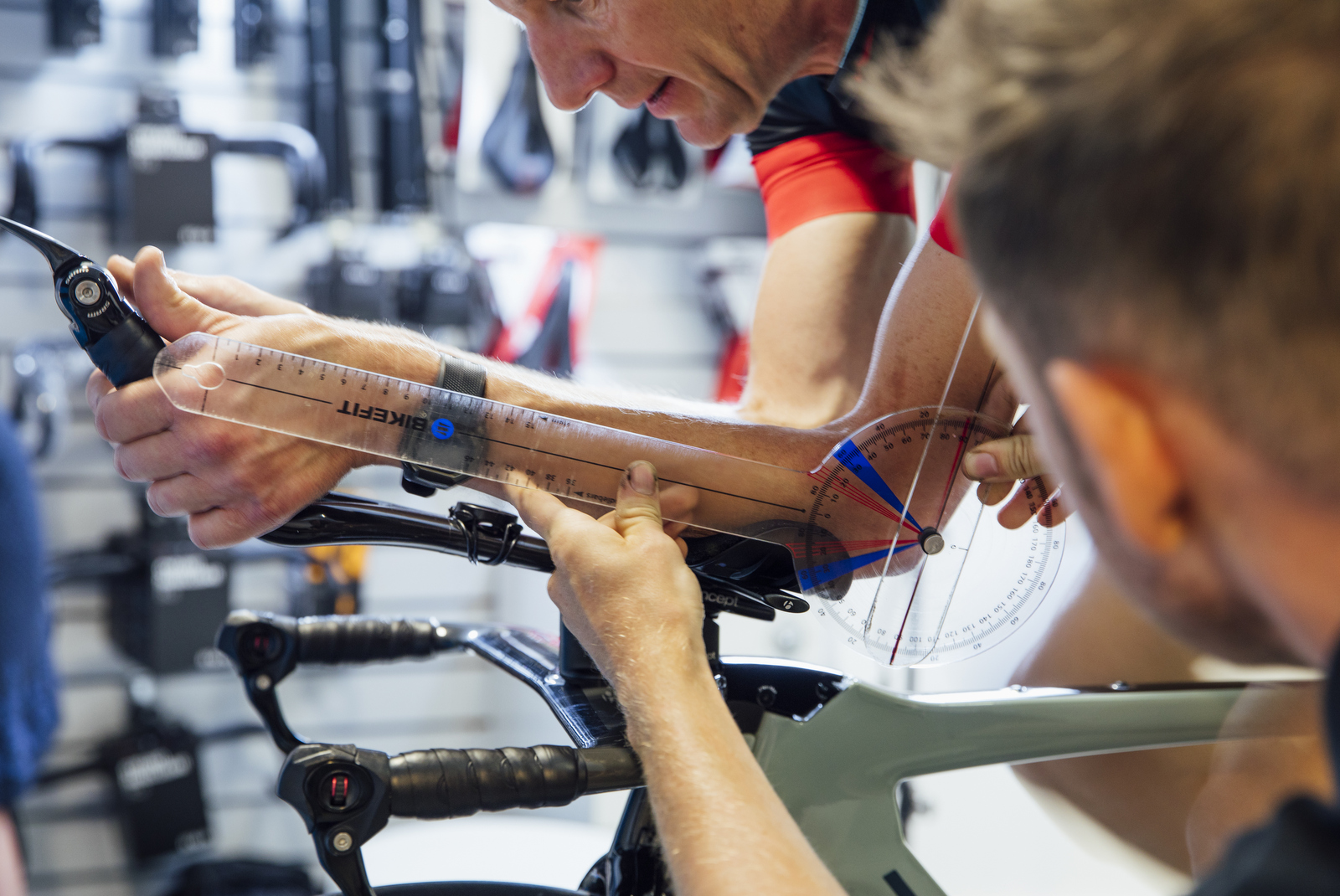
A bike fit should help you get more comfortable
What's the difference between race and endurance geometry?
A key decision when choosing the best road bike for you is what you plan to do with it. Are you looking to go fast or race, or are you after a more comfortable bike for leisurely rides or long days in the saddle?
Geometry is the key factor here. A full-on race bike will put you in a more bent-over riding position, with your head and shoulders lower down over the handlebar. That’s great when you have a need for speed, reducing your frontal profile to lower your wind resistance but can be uncomfortable, particularly for a beginner.
On the other hand, bikes labelled 'endurance' or 'sportive' will be designed for a more upright riding position, with the bars higher and closer to the saddle. That delivers greater comfort on longer rides, but may make you a bit slower.
If you’re riding on hilly roads, or planning a trip abroad to the Alps for example, you’ll certainly appreciate a lightweight bike. However, if you're going to spend your time riding fast on flatter terrain then aerodynamics are probably more important to you. And If you’re looking to race, the stiffer, more edgy handling of a race bike will work better than the more stable handling of an endurance machine.
An increasing number of bikes are designed to take you off the tarmac as well as letting you ride efficiently on road. A gravel bike will give you wide tires and lower gears. But many endurance or 'all-road' bikes now offer plenty of tire clearance as well as an expansive gear range, letting you take in a wider variety of routes.
How much do I need to spend on a road bike?
You also need to look at how much you want to spend on a bike. That’s not just the initial outlay, but the cost of replacing worn or damaged parts, the cost of servicing your bike and the cost of any upgrades. There’s a big difference in price between lower spec mechanical parts and top of the range electronic gearing.
A bike's specs will vary a lot between manufacturers. In particular, prices will often be lower at direct only brands (such as Canyon and Ribble) and in-house brands (Vitus at Wiggle or Boardman at Halfords). But to give you an idea, here's a look at common specifications at various investment levels. In the interest of brevity, some bandings are wide and therefore you would expect variation within them.
£750 - £999 / $1000 - $1500
An aluminium frame and carbon fork, aluminium seatpost and handlebar/stem, shifting at Shimano Sora or Claris level, aluminium wheels. Rim brakes.
£1000 - £2000 / $1500 - $2500
Either an aluminium frame and carbon fork at around Shimano 105 level, or a carbon frame and fork with shifting at Shimano Tiagra level. Aluminium wheels, seatpost and handlebar/stem. Disc or rim brakes.
£2000 - £3500 / $2500 - $4000
Carbon frame and fork with Shimano 105 (lower end of budget) or Ultegra (higher end), aluminium or carbon rims, carbon seatpost, aluminium handlebars and stem. Disc brakes should be hydraulic from this price point. Titanium frames are an option.
£3500 - £5000/ $4000 - $6000
Carbon or titanium frame and fork, Shimano Ultegra or SRAM AXS eTap groupset, carbon seatpost, aluminium bar/stem, carbon rims
£5000 - £10,000 / $6,000 - $12,000
Carbon frame and fork, Shimano Dura-Ace Di2 or SRAM Red AXS eTap, carbon wheels of 50mm+, carbon bars and stem.
£10,000+ / $12,000+
Accept nothing but the best of everything. Top of the range carbon frame and fork - usually utilising stiffer carbon and therefore fewer layers resulting in lower weight, carbon wheels of 50mm+, one piece carbon bar/stem Shimano Dura-Ace, SRAM Red AXS or Campagnolo Super Record Wireless, power meter as standard.
What are the best frame materials for road bikes?
A major difference between cheaper and more expensive bikes is their frame material. Bikes costing under $/£1000 are typically made of aluminium alloy, with the tubes welded together. It’s a material used in more expensive bikes too and can result in a strong, lightweight machine.
But pricier bikes are usually made of carbon fibre. The fibres give the bike strength and are embedded in a synthetic resin to hold them together. The mix of fibres used and their lay-up determine the bike’s ride feel. More expensive bikes will use more high modulus carbon fibre, which lowers the weight without reducing the bike’s strength.
Titanium is another material used in some more expensive bikes. It’s lightweight, strong and doesn’t rust or fatigue. And you can still find bikes made of steel tubing, which was the traditional framebuilding material. It’s not quite as light as other choices, but robust and gives a distinctive ride feel.
You should also look at what the bike’s fork is made of. Many bikes will have an all-carbon fork or one with carbon fork blades and an alloy steerer. This tends to absorb road bumps well for a more comfortable ride, but you can find alloy or steel forks on some lower priced bikes.
What is an 'aero' road bike and do I need one?
Bike makers push their bikes’ aero credentials, especially on more expensive machines, with claims of wind tunnel testing and time saved. Time was, an aero frameset was significantly heavier than one with the traditional round tubes, but the best aero bikes can now be as light as a non-aero one.
On the other hand, around 80% of the wind resistance comes from the rider, not the bike and those time savings are typically when riding at around 45kph/28mph. Since wind resistance increases as the cube of speed, if you’re riding at half that, you’ll have an eighth of the drag, so all those aero features won’t make a lot of difference.
How many gears should a road bike have?
After the frame, gears are the most important thing to consider when choosing a road bike. Today many top end road bikes will come fitted with 12-speed cassettes. When paired with a double chainring this means you'll have 24 gears. Remember however that some of these gear ratios will be duplicated in certain chainring/cassette combinations.
More affordable road bikes tend to come with fewer gears. These cassette options should range from 8-speed to 10-speed, again most often paired with a double chainset.
As for groupset brands, Shimano gearing is the most common, but the other major options are SRAM and Campagnolo. Shimano’s top end groupsets, Dura-Ace, Ultegra and 105 have a 12-speed cassette, while less expensive bikes may come with 10-speed Tiagra, 9-speed Sora or 8-speed Claris.
SRAM and Campagnolo also offer 12 speeds on their top end road bike groupsets and all three brands offer electronic shifting rather than the mechanical cables used on lower priced ranges.
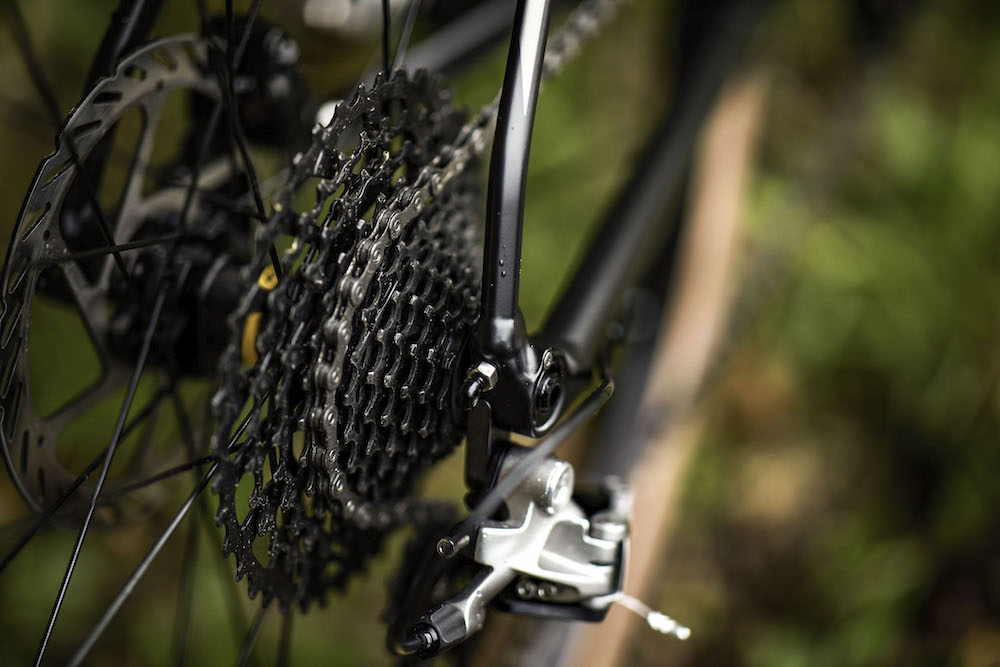
Wider range cassettes help in the hills
What are the best gear options for a road bike?
When choosing a new road bike it's important that you think about the gears it comes equipped with. Fortunately if you've already matched your potential bike to the kind of riding you plan on doing, there's a good chance that the gear choice will also be well-suited.
An out-and-out race bike may come with a more traditional gearing set-up, for example 53/39 tooth chainset paired with an 11-30 tooth cassette.
However road bikes that fall into the endurance or sportive categories are likely to have a compact chainset, most likely a 50/34, and a cassette that will have 30, 32, 34 or even 36 teeth as the largest option. The lower gears will help you to both tackle steep hills with more ease and generally pedal with a higher cadence. However, this can mean larger gaps between gear ratios.
There are other options out there too. SRAM, for example, now offers its eTap AXS groupsets with 48/35, 46/33 and 43/30t chainsets. Paired with its cassettes starting at 10 teeth, these give similar highest gear ratios to traditional gearing starting at 11 teeth, but greater low-end gear range for easier climbing and less need to shift between chainrings on undulating roads.
Are rim or disc brakes best for a road bike?
Disc brakes have largely taken over on road bikes and all but the lowest priced bikes are now in general disc brake only. That said, you can still find rim brake bikes, usually at either end of the price spectrum.
Typically disc brakes give you more consistent braking, whatever the weather conditions, better modulation and greater overall stopping power. On the flip side, they’re heavier than rim brakes, although bike makers have been able to make frames lighter, largely mitigating the extra weight.
Most disc brake bikes use hydraulic calipers, although you can find mechanical disc brakes, usually on cheaper machines. Discs have been creeping down the price range for the last few years, which means it's still likely an option even if your budget is limited.
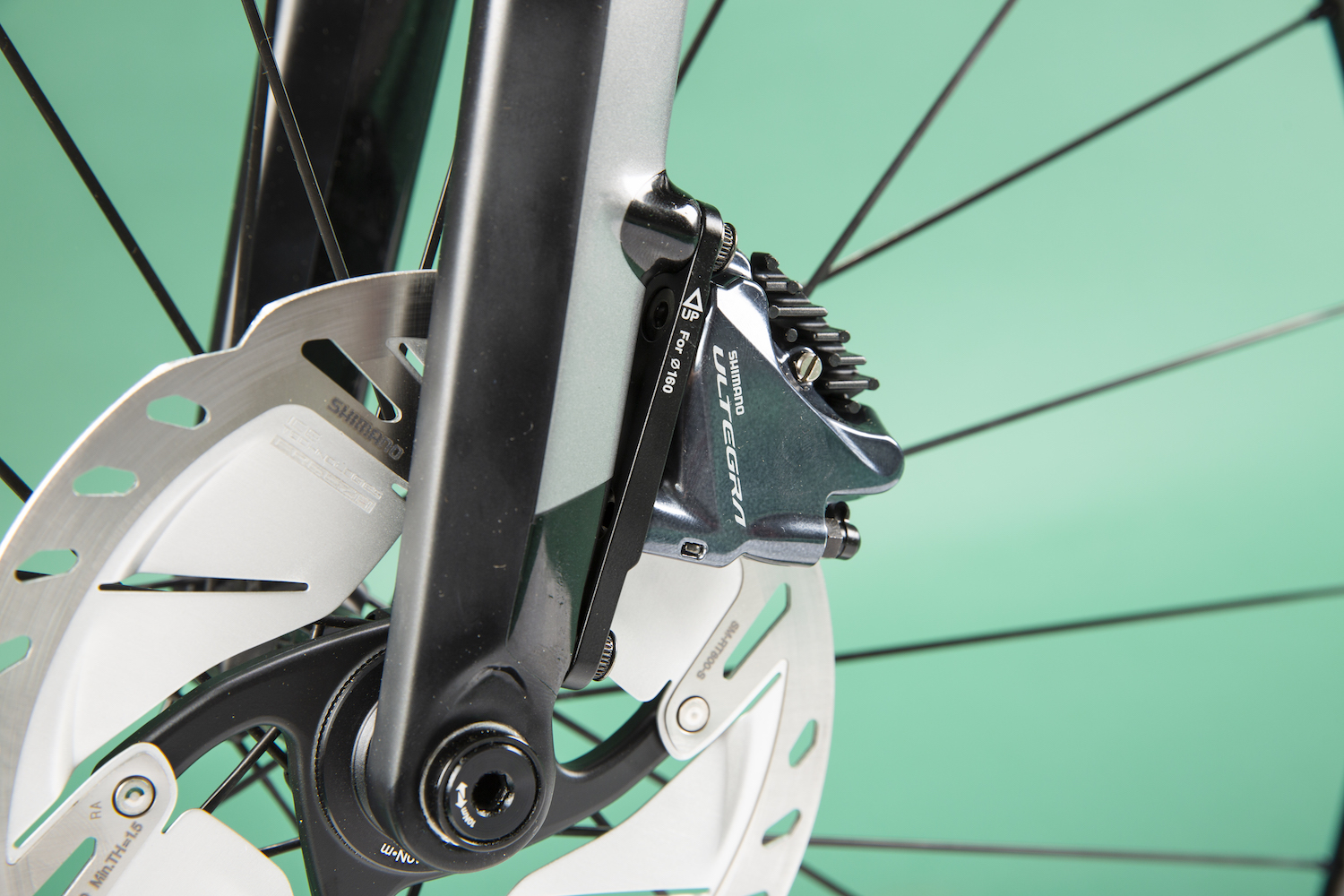
Disc brakes are a feature of the majority of new road bikes
Frequently asked questions about road bikes
Is electronic shifting really better?
While the major groupset brands - Shimano, SRAM and Campagnolo - still offer mechanical groupsets, there has been a significant shift towards electronic shifting in recent years. Here a motor shifts the derailleurs between ratios, rather than the traditional cable.
The main electronic systems are Shimano Di2, Campagnolo Wireless and SRAM eTap AXS, which all offer 12 speeds.
There are benefits and drawbacks of both mechanical and electronic options.
Mechanical components, such as mechs and levers, are generally cheaper and lighter than their electronic counterparts. They are also, for the most part, easier to fix when something goes wrong.
Electronic gears benefit from reliable shifting. There's no cable tension at play here. If you've suffered a hand injury, the ease of changing gear with the press of a button could be appealing.
Electronic gearing can be personalised through an app, allowing you, for example, to shift multiple gears seamlessly. However, all this tech doesn't come cheap and complete road bikes fitted with electronic gears will be more expensive. Plus, you've got to remember to charge the batteries.
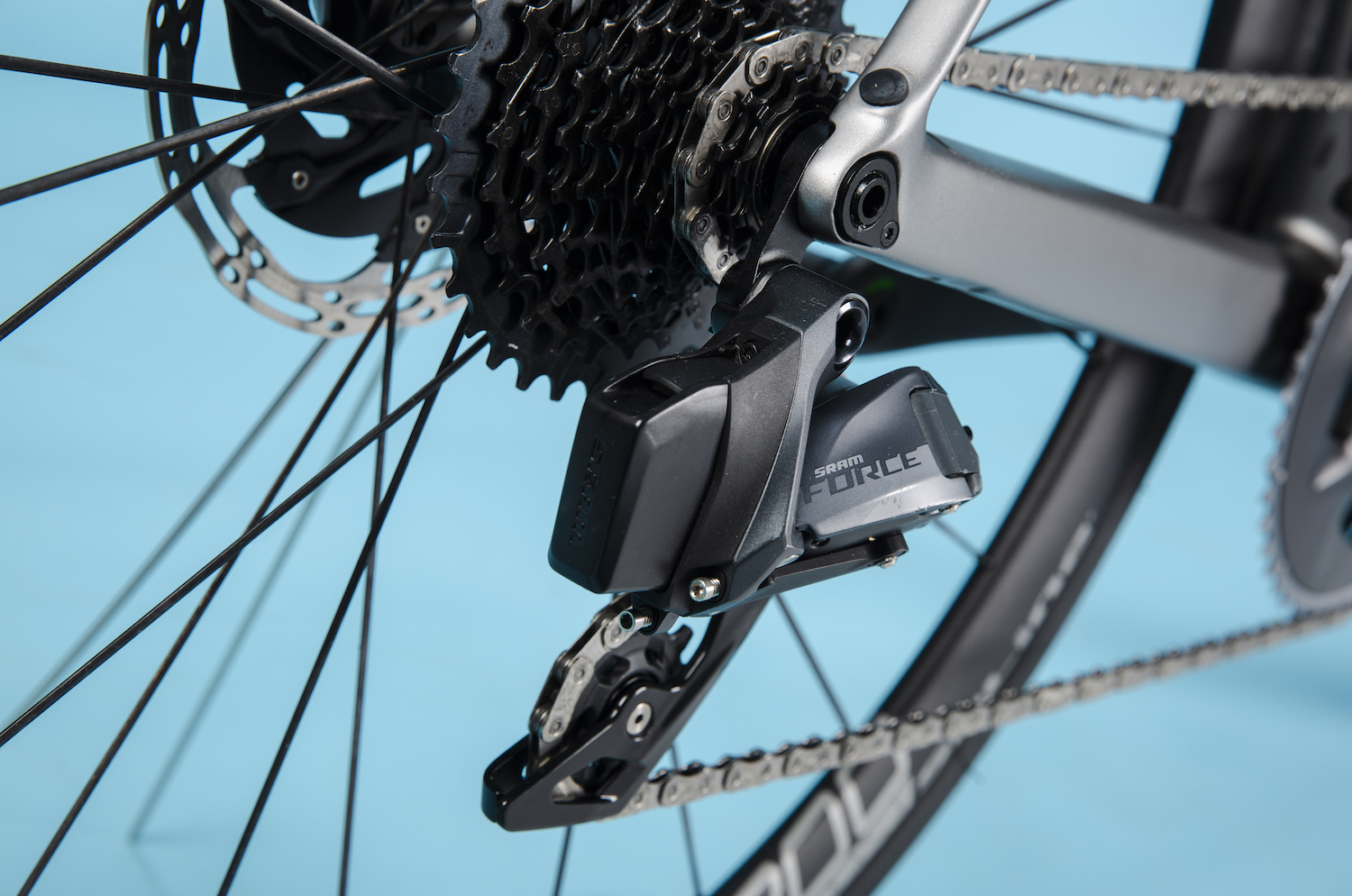
Electronic shifting is now a mainstream option on higher spec bikes
What is the difference between carbon and alloy wheels?
Road bike wheels are typically 700c size, although the smaller 650b size can be found on some smaller frames. Regardless of size, both are available as carbon or alloy options.
Carbon fibre rims are used on most of the best road bike wheelsets. These rims lower weight and are often deeper, to improve aerodynamics over a shallow wheel. In fact carbon can be produced in a far greater range of shapes, allowing manufacturers to create wheels optimised for a varied range of riding styles.
Alloy rims are generally cheaper and will feature on many complete road bikes. They are usually heavier than their carbon counterparts although lightweight alloy options are available.
Wheels are a component where bike makers often look to economise, so a budget wheelset may feature even on an expensive bike. It’s worth considering whether you’ll need to upgrade them to get the best out of your new bike. If you decide to do so, you can always keep the original set for winter riding.
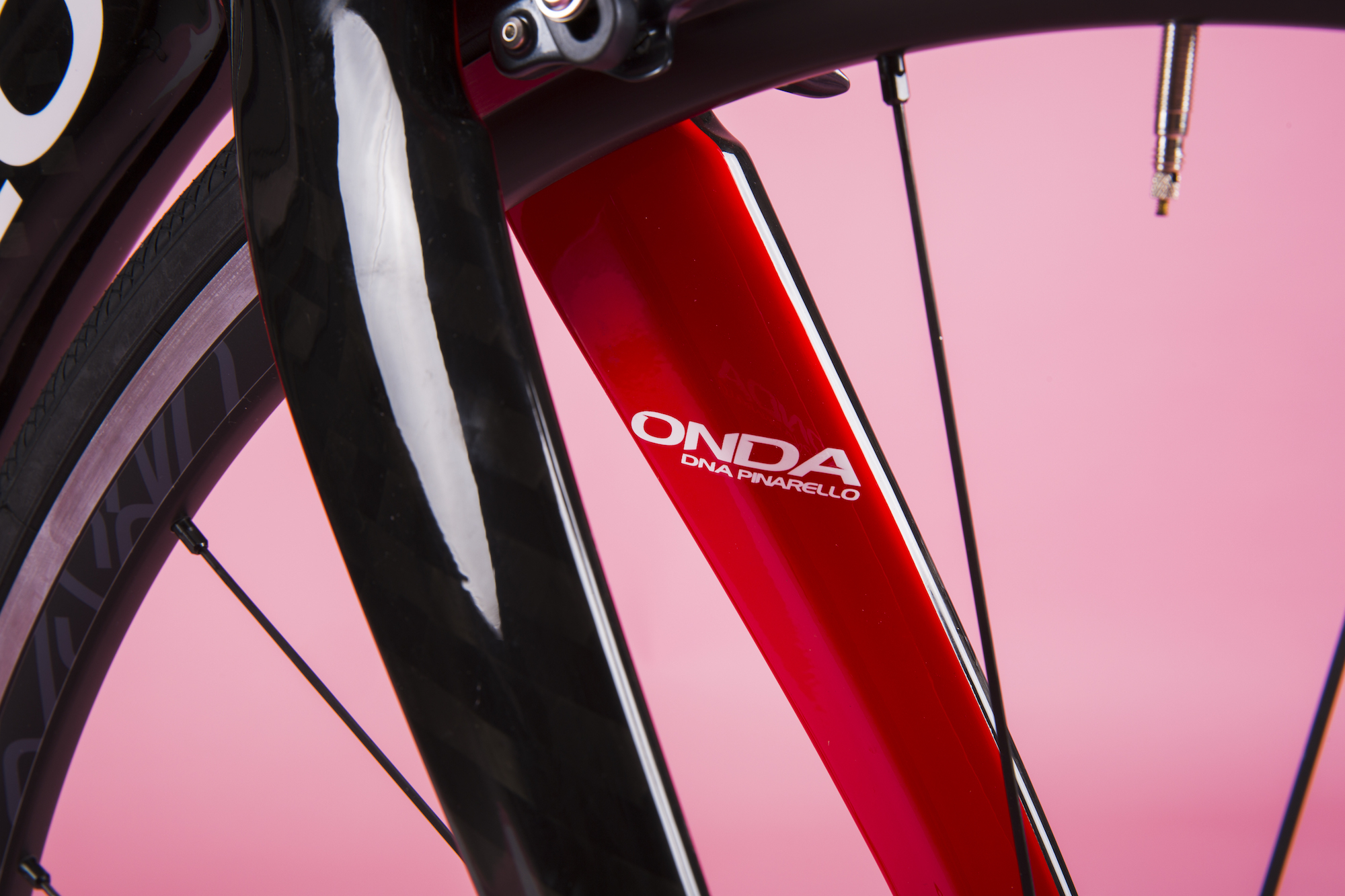
Wider tyres let you reduce tyre pressure, increasing comfort and grip
What is the best tyre width for a road bike?
There was a time when tyre options for road bikes were limited by the frames they were fitted to. A 23mm tyre was commonplace. If you were lucky, you might be able to squeeze a 25mm into your frame.
However, today road bikes now come with increasingly wide tyres due largely to the advent of disc brakes; even race bikes will typically have clearance for 28mm to 32mm tires, while endurance machines will likely allow for wider still. It's worth noting that even if your new bike has come specced with 25mm or 28mm tyres, there's a good chance it will have the clearance for something wider.
With wider tyres, it's possible to run a lower tyre pressure for more comfort and added grip. Wider tires can be as fast as or faster than narrower widths as well.
Wheels and tyres are increasingly tubeless-ready too. This means that you can add sealant and dispense with the inner tubes, reducing the risk of punctures and upping grip and ride comfort even more. Tubeless tires are, in general, faster as well.
The latest race content, interviews, features, reviews and expert buying guides, direct to your inbox!
Like many, Matt began his bicycle industry journey on the spanners at his local bike shop. After spending his youth mountain biking, he was inspired to embrace gravel during his tenure with Evans Cycles' in-house brands, Pinnacle and Hoy Bikes. Recognising the evolving industry, Matt eagerly seized the chance to become an E-bike designer, winning several awards with the E-bike brand Cairn Cycles.
These days, Matt is likely to have a toddler sitting shotgun or off the beaten track somewhere on the South Downs.
- Andy CarrCycling Weekly Tech Editor
- Luke FriendFreelance writer
- Anne-Marije RookNorth American Editor